Tattoos have been a means of telling stories that words often cannot put together. While arm sleeves and back pieces have enjoyed years of being in the spotlight, one subtle yet captivating canvas is on the rise: the feet. Foot tattoos speak to a unique blend of artistry, intimacy, and discretion, hence becoming an increasingly favored choice among tattoo enthusiasts.
In this blog, we are going to delve deep into tattoos on the feet, learning about all the different charms and practicality involved. First, we look at the aesthetic and symbolic meaning of such tattoos as what makes them special, then proceed to an examination of pain in tattooing and aspects of healing particular to that area.
Next, we’ll explore the spectrum of design options-from minimalist patterns to complex artworks-and give advice to both the first timer and the seasoned tattoo enthusiast. Finally, we’ll give a rundown of essential aftercare tips that will help your foot tattoo remain vibrant and stunning for years to come.
Whether you’re considering getting your first ink or adding to an existing collection, join us as we take our maiden voyage into the mystical realm of foot tattoos.
Foot Tattoos 101: Your Complete Guide to Tattoos on Your Feet
With each passing year, foot tattoos remain intriguing for both the curious about getting tattoos and veterans alike. These works of art can be as subtle or as bold as you like, providing a unique canvas that can easily be hidden or shown off. Before you decide to get inked on your foot, however, there are a number of considerations you’ll want to take into account. In this in-depth guide, we’ll consider everything from design options to aftercare when it comes to tattoos on the foot.
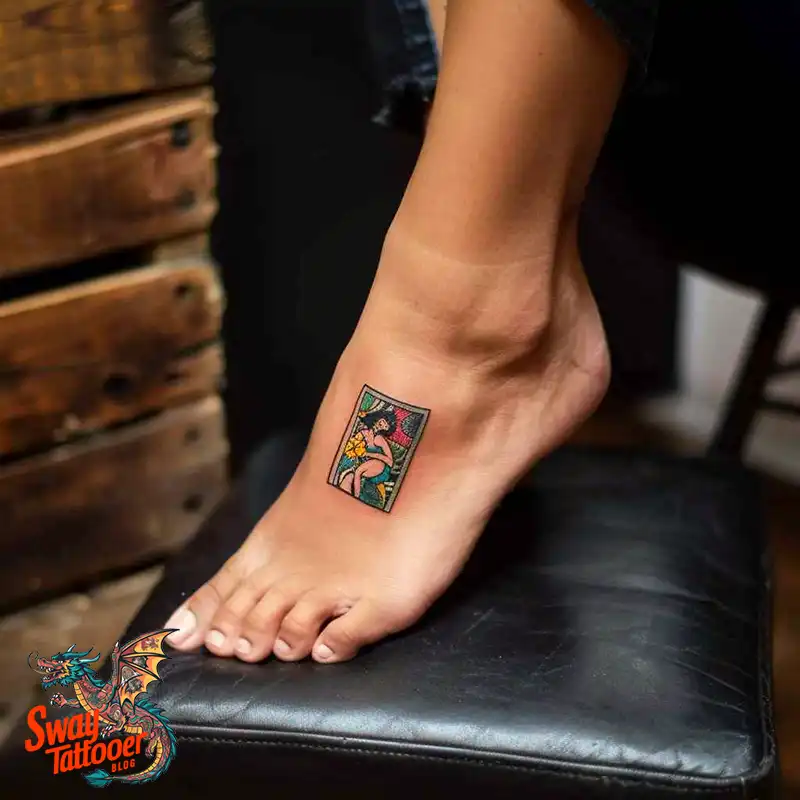
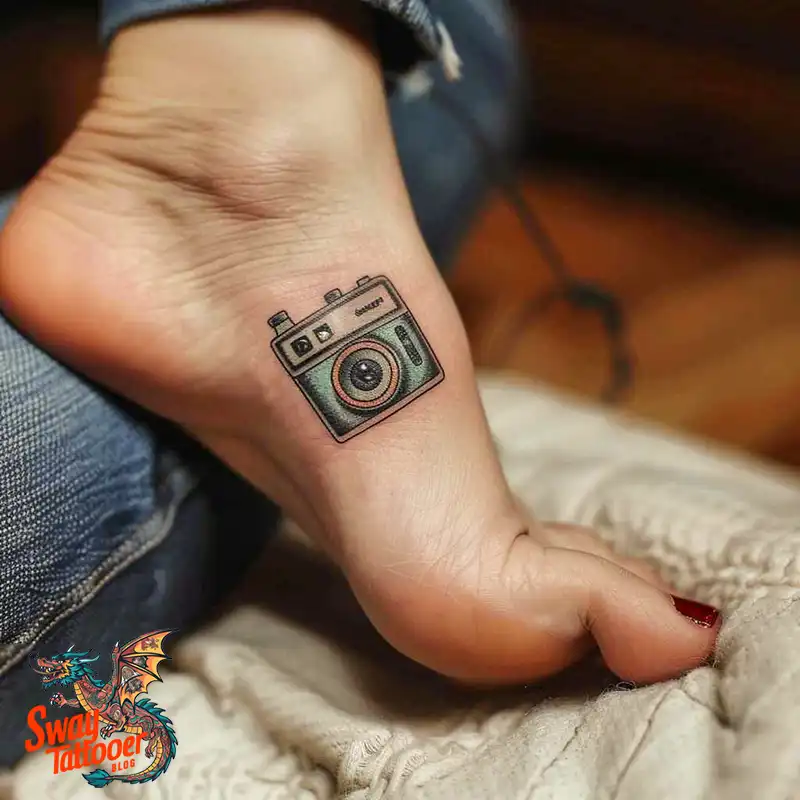
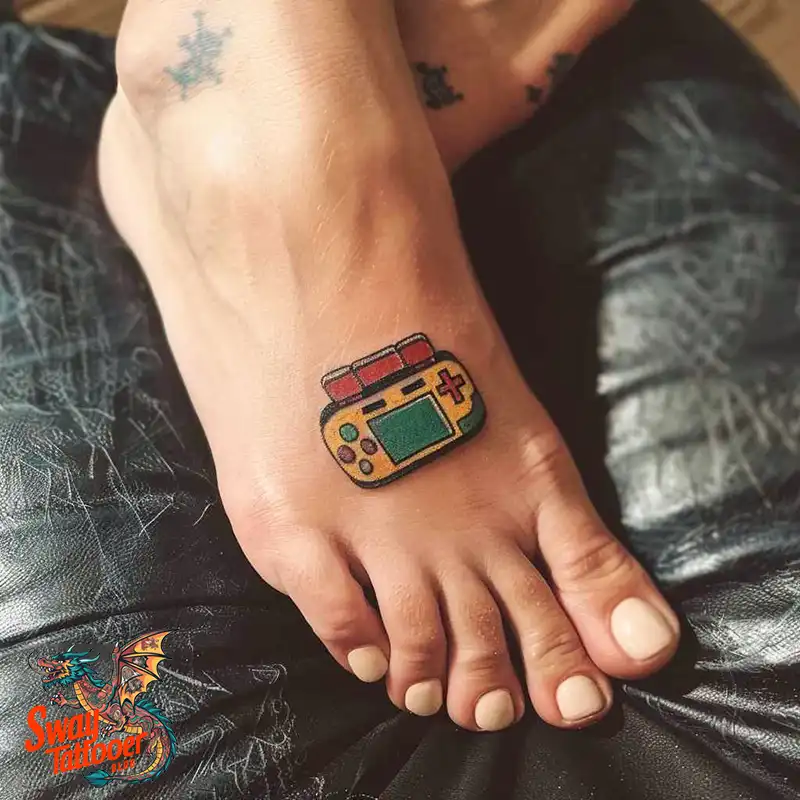
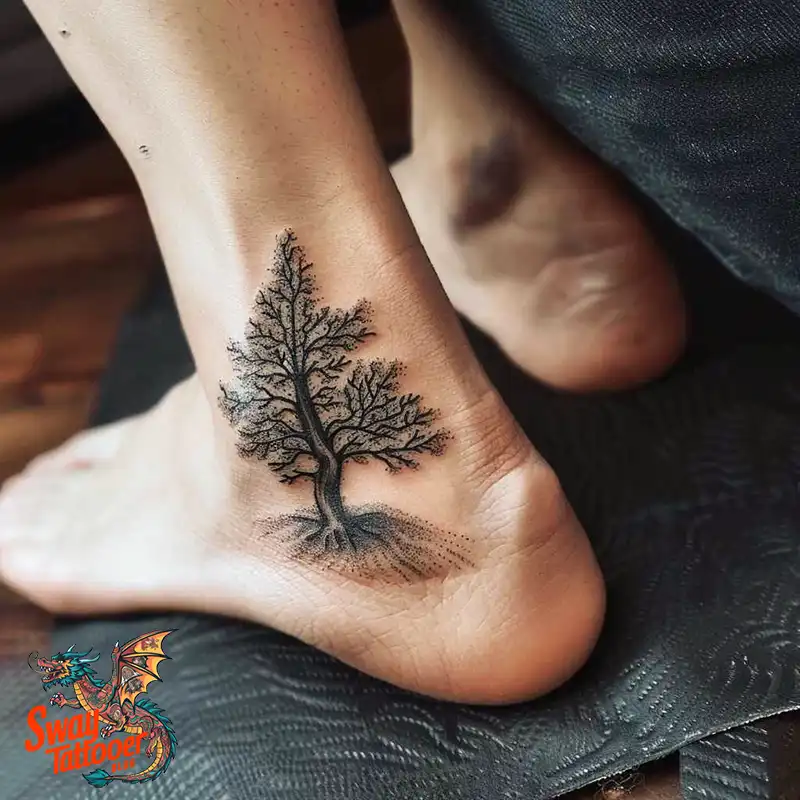
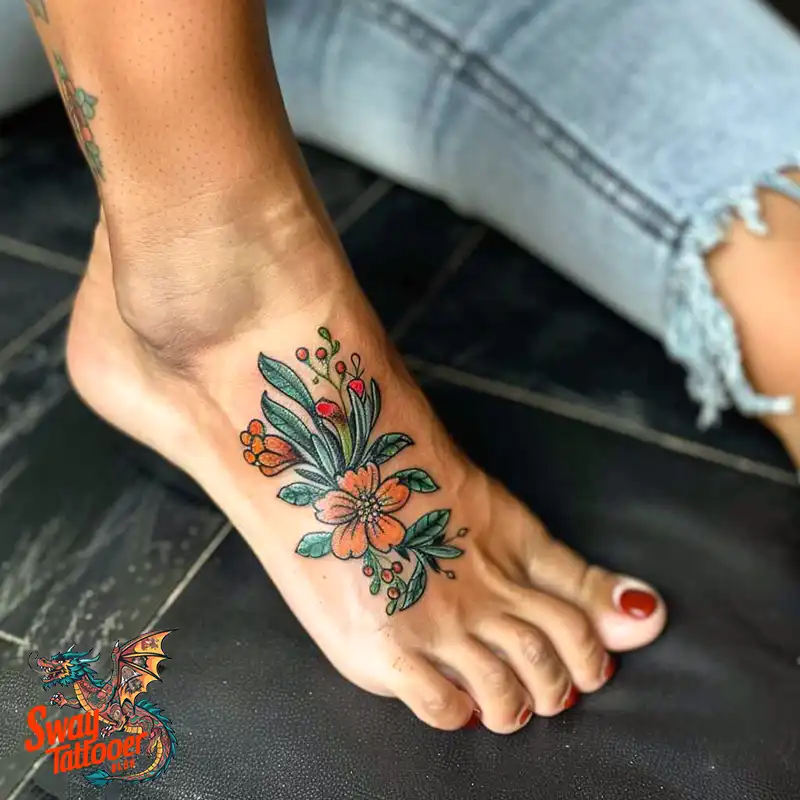
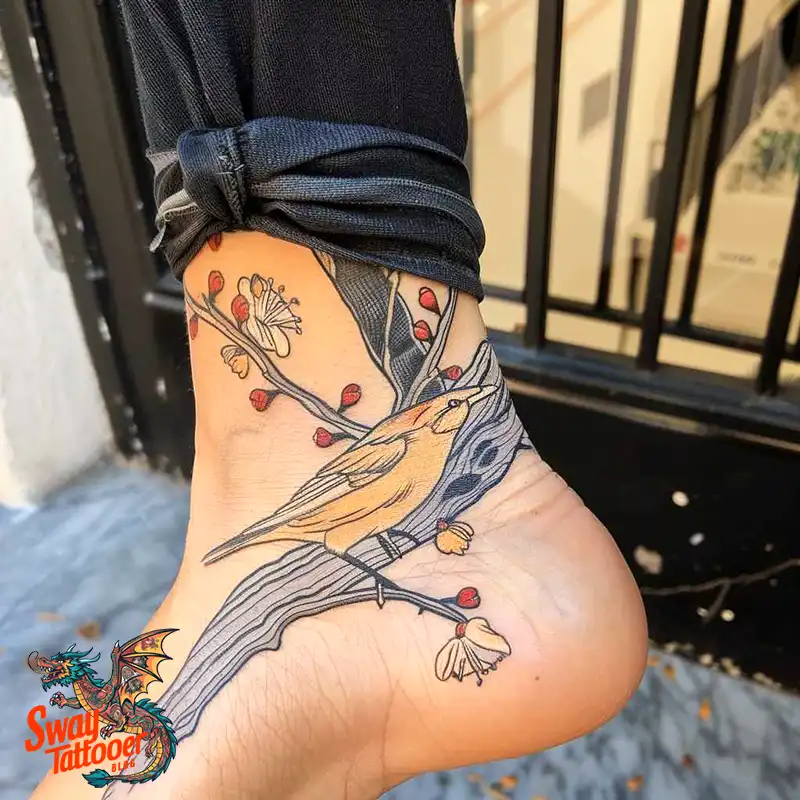
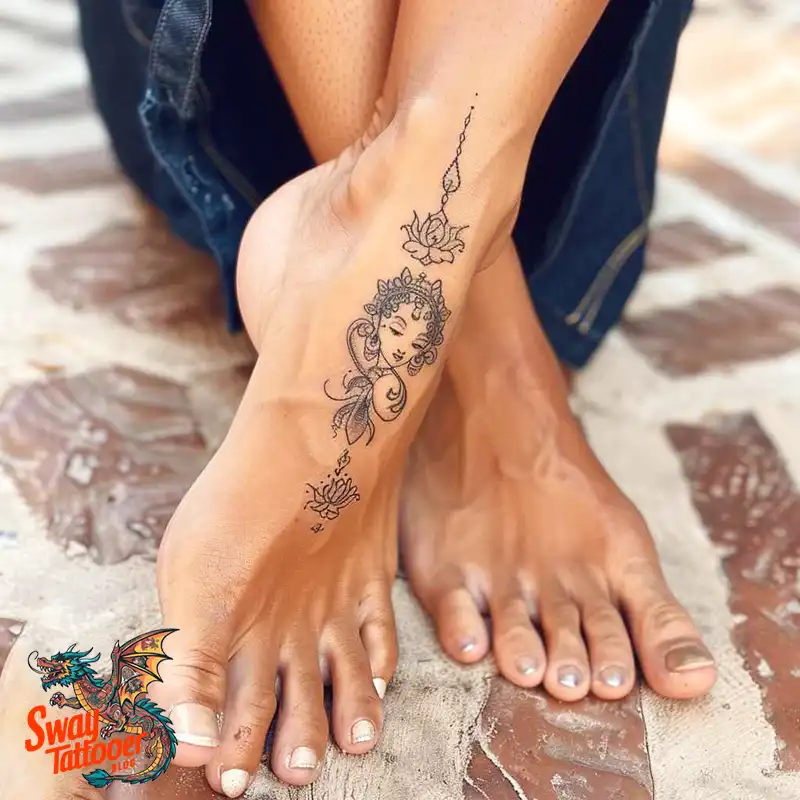
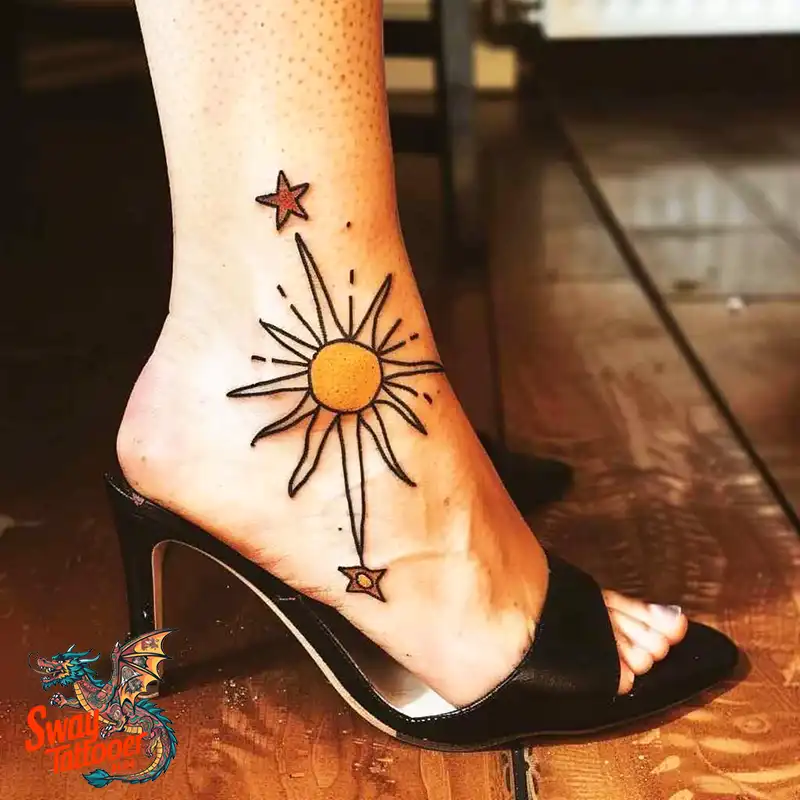
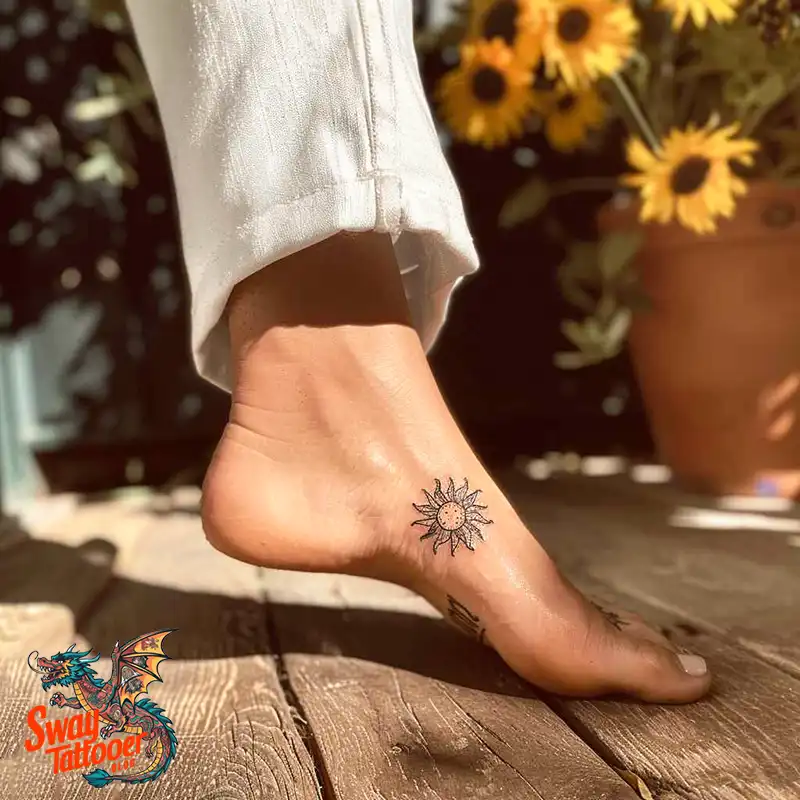
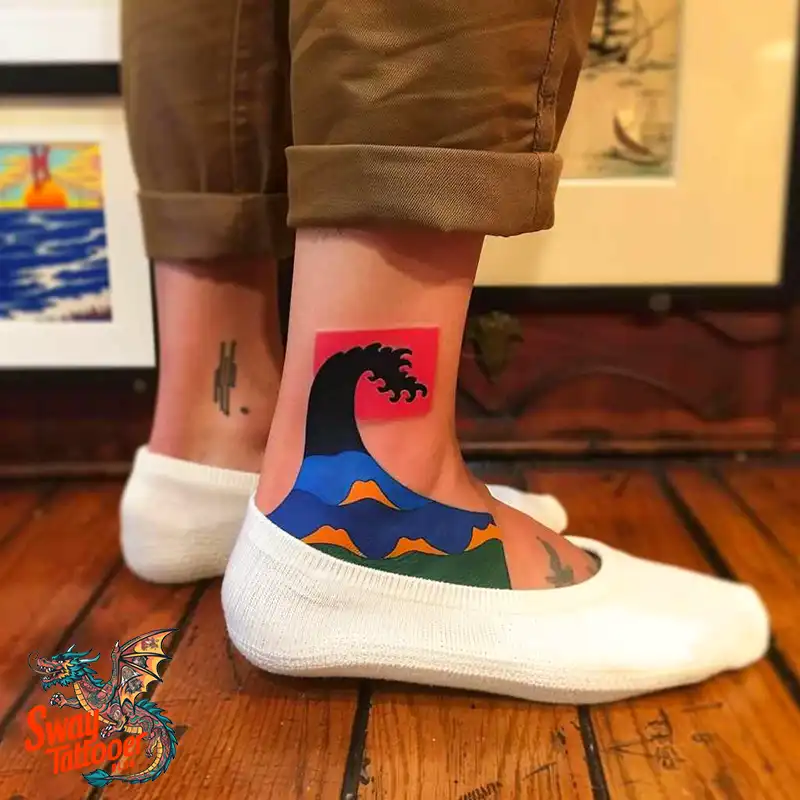
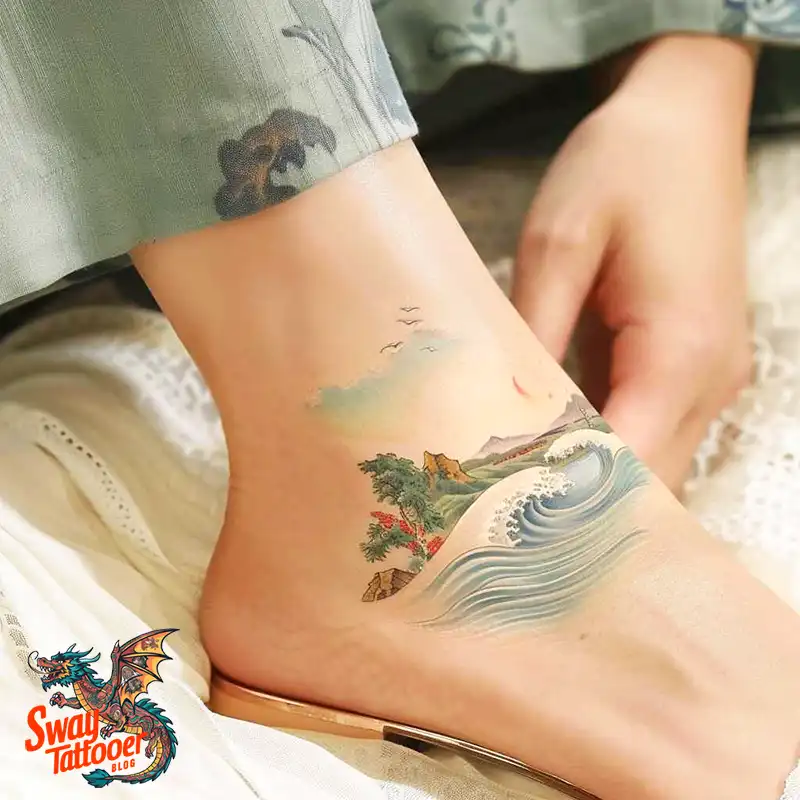
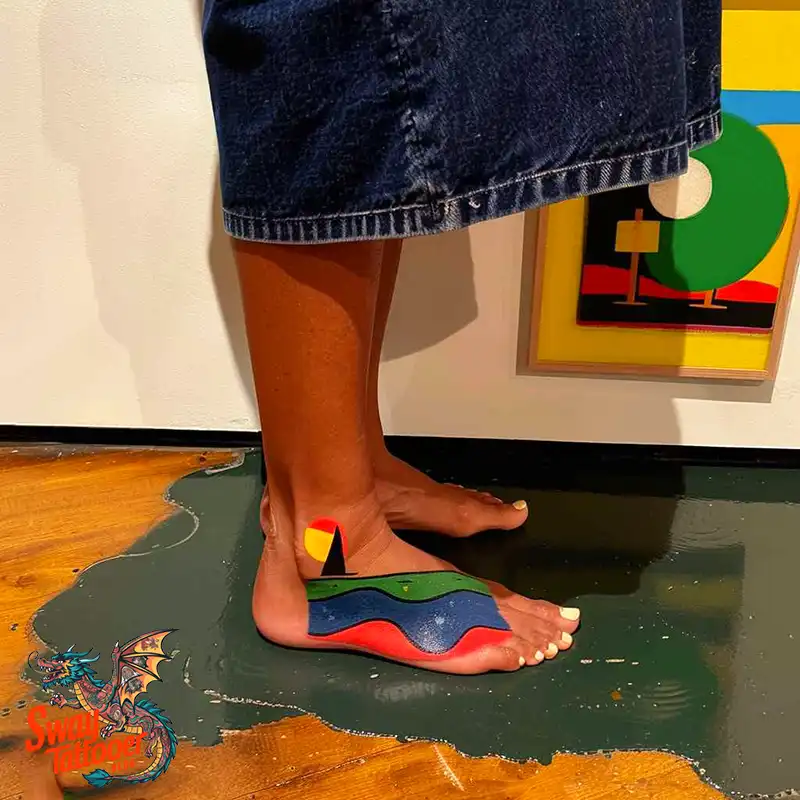

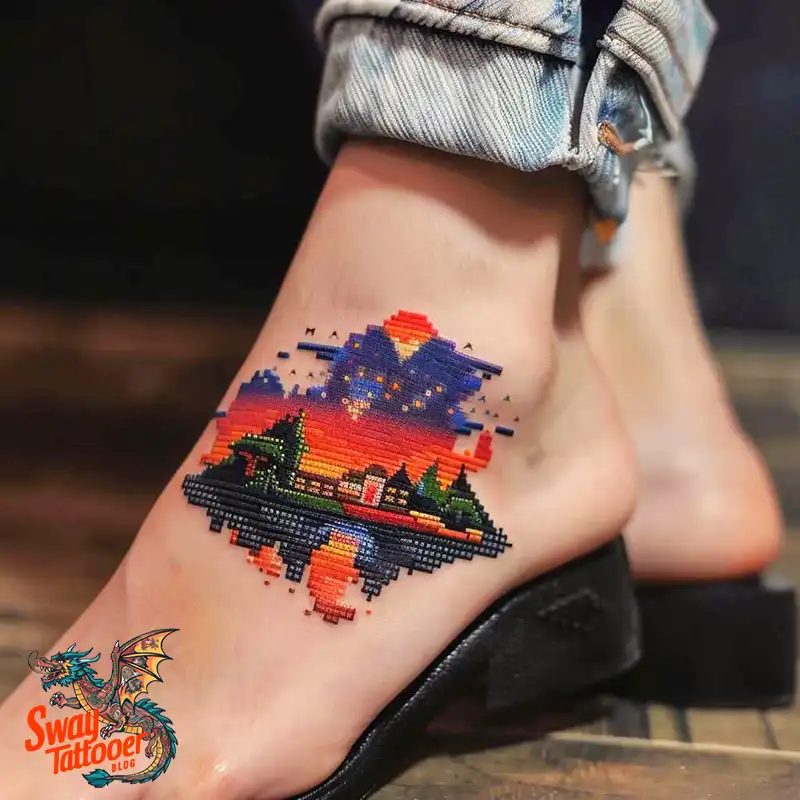
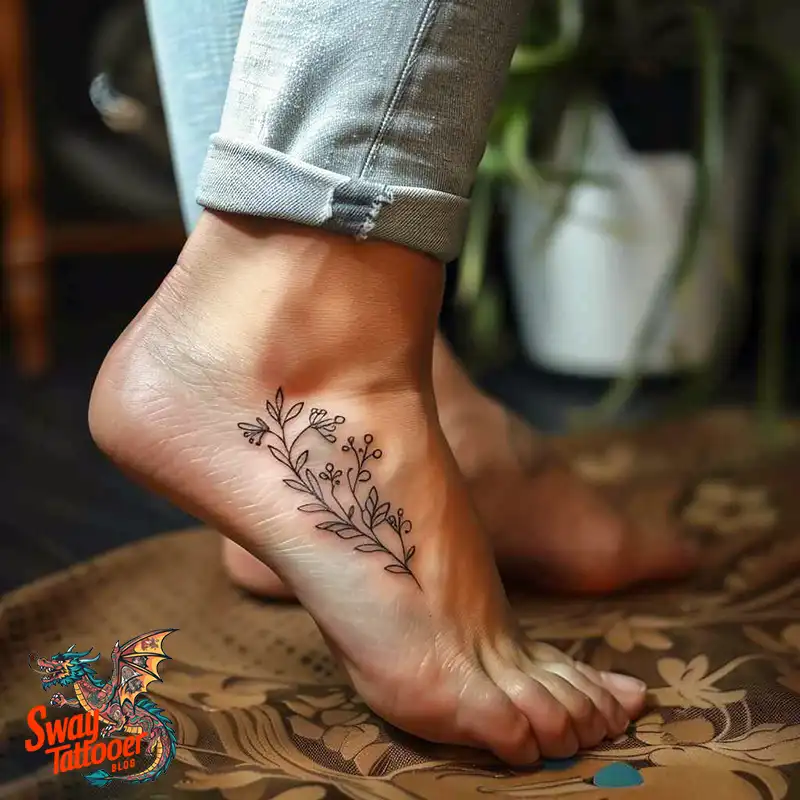
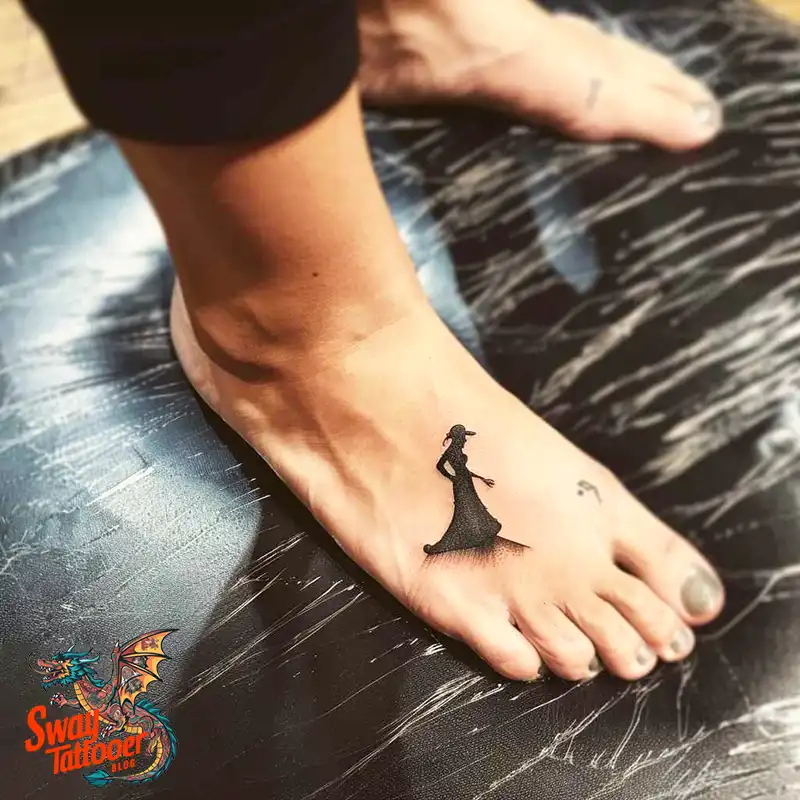
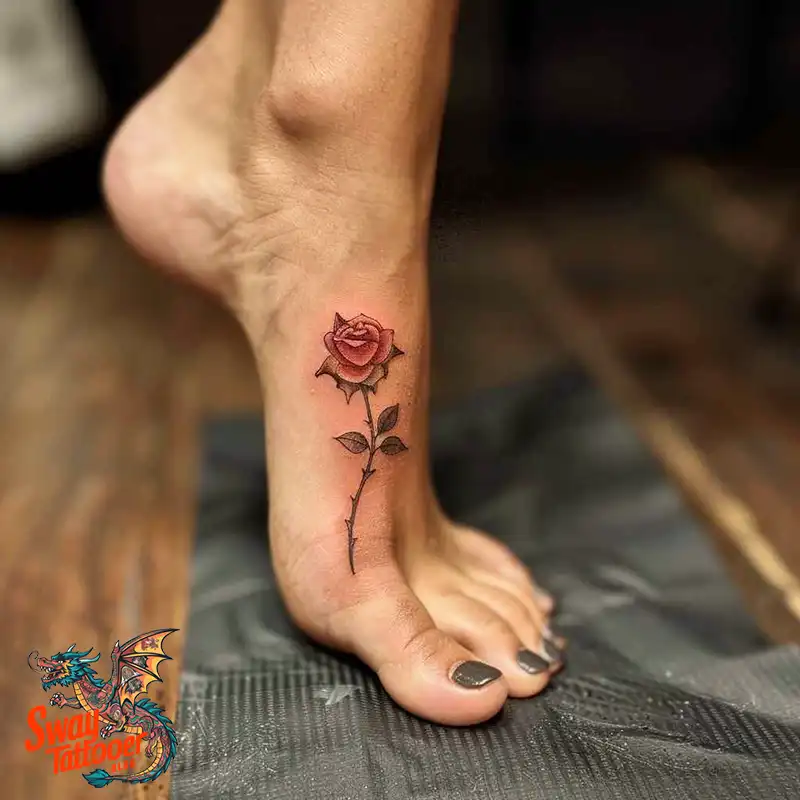
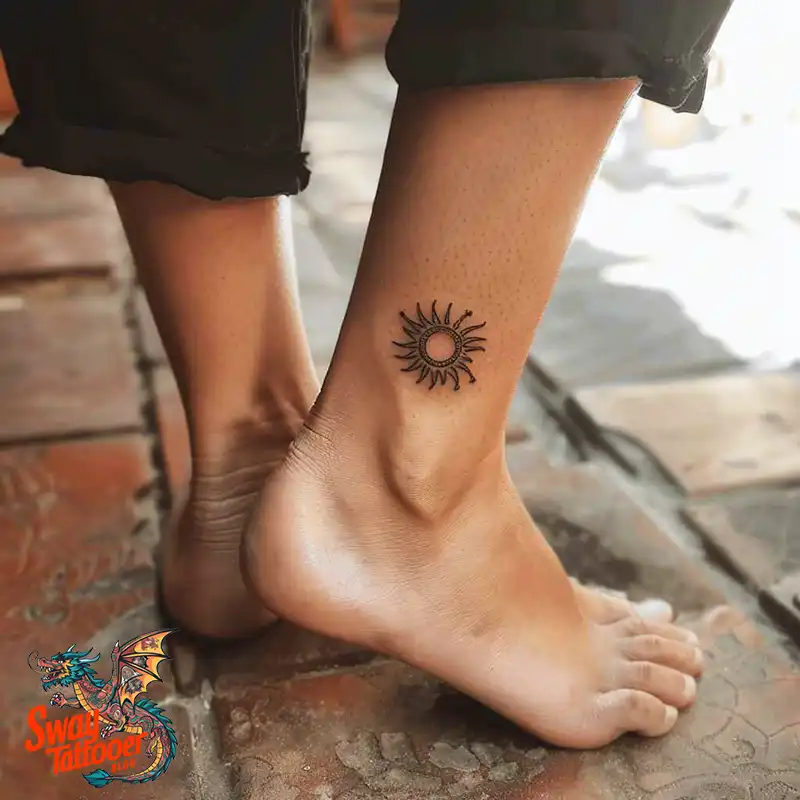
Why Get a Foot Tattoo?
Foot tattoos offer certain unique advantages:
- Concealability: Most of the workplaces have a ‘no visible tattoo’ policy. Even sometimes, people do not want to show off their body art. In all these cases, a foot tattoo can easily be covered by socks or shoes.
- Artistic Creativity: The foot affords a peculiar and often untapped canvas for the artist. Designs can wrap the ankle, extend to the toes, or even cover the entire top of the foot.
- Variety of Designs: From the delicate, minimalist tattoos to intricate bold tattoo designs, a foot is capable of giving shelter to any sort of art.
Popular Foot Tattoo Designs
When it comes to a foot tattoo, the option can be endless. Following are some popular design choices:
- Floral Patterns: Flowers always remain in. Options vary from detailed roses and lilies to simple daisies and cherry blossoms.
-Mandala and Geometric Shapes: These minute designs sometimes look so striking on the foot, with an appealing look and symmetry of great order.
-Animals and Insects: Flowers, leaves, butterflies, birds, and every other kind of animalistic or insect-like motifs are gorgeously rendered on the foot.
-Quotes and Texts: A meaningful phrase or word could get beautifully placed along the arch or the side of the foot. - Cultural Symbols: henna designs, tribal patterns, or any other culturally symbolic design may be an uncommon yet special choice for a few.
Pain and Sensitivity
It is critical to observe that tattoos on feet may hurt a lot. Why?
- Skin of the Foot: the skin covering the foot is much thinner compared with other parts of the body, hence more sensitive to the needle.
Proximity to Bone: There is less muscle and fat in your foot, and hence, most of the time, the tattoos are closer to the bone, making it more painful.
Nerve Endings: Feet have a high level of nerve endings, which may make the touch of needles on your skin more sensitive and heightened.
If the pain really bothers you, it would be good to discuss the options of numbing with your tattoo artist.
Preparation and Process
As with preparation for getting any other tattoo, getting a tattoo on your foot can be pretty smooth.
- Find an Artist to Research: Find a reputable tattoo artist who does foot tattoos. Check the portfolio so that you may be certain his style is precisely what you are looking for.
- Keep Hydrated: Drink plenty of water before the session. The hydrated skin is way easier to work with.
- Avoid Alcohol and Caffeine: Both of these things have the effect of making blood thinner, which can facilitate bleeding when getting a tattoo.
Wear comfortable shoes and ones that won’t irritate your new tattoo on your way home.
Aftercare Tips
Foot tattoos are very sensitive and require good aftercare for them to heal properly. Here are some steps in taking good care of your tattoo:
Keep it clean by gently washing the tattoo with mild soap and lukewarm water. Avoid soaking your foot in pools of water, such as swimming pools, for at least two weeks.
- Keep it Moisturized: Use a recommended tattoo lotion to keep the area moisturised at all times, preventing it from drying out.
- Avoid Wearing Tight Shoes: Put on open-toe shoes or flip-flops, ones that will not aggrieve the tattoo. This causes friction and will prolong the healing process.
- Stay Off Your Feet: During the days subsequent to your tattoo, minimize walking and standing for very long to minimize swelling.
- Protect from Sun: Keep your tattoo covered or use a high-SPF sunscreen if you need to expose your tattoo to sunlight.
Healing Time and Possible Complications
A foot tattoo would take more time to heal compared with other parts of your body. It would take about 2-3 weeks in an initial healing phase, but it takes a couple of months for complete healing. Be aware of possible complications:
- Infection: Signs and symptoms include increased redness, swelling, or pus. See a physician if you think you have an infection.
- Fading/Blurring: Because of the always-on-the-move foot and friction involved, foot tattoos fade or blur faster than on other parts of the body. Retouches may be necessary.
- Allergic Reactions: Though rare, one may also develop an allergic reaction to the ink.
These are beautiful, unique tattoos, but one should be very mindful of what they want, and care for them appropriately. From choosing the right design and artist to understanding the pain and aftercare involved, being well-informed can help you achieve a stunning and lasting piece of art. With that in mind, the following guide should give you all the information you could need to make your decision. Happy tattooing!
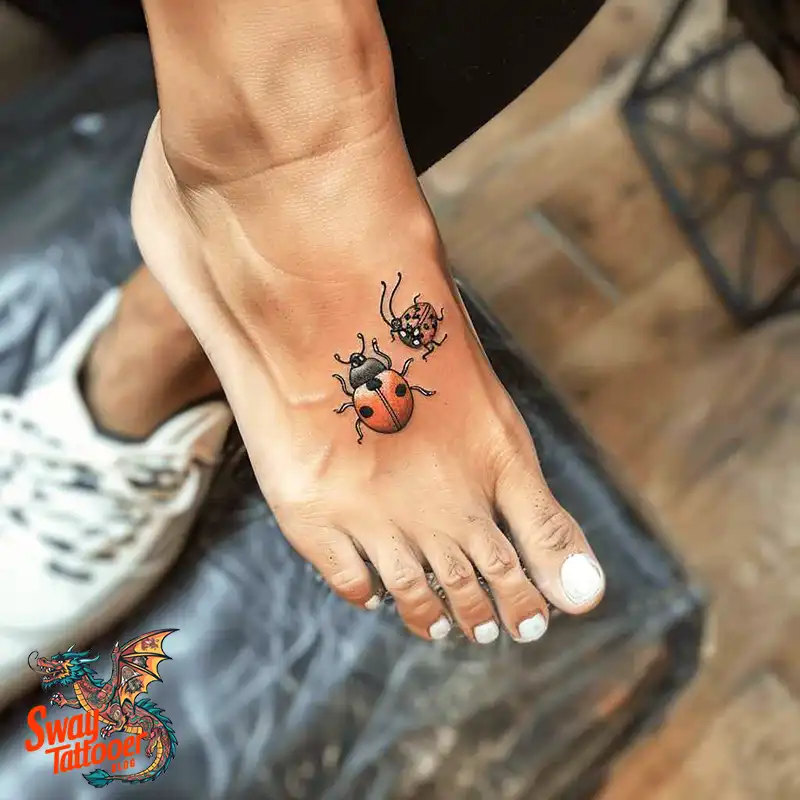
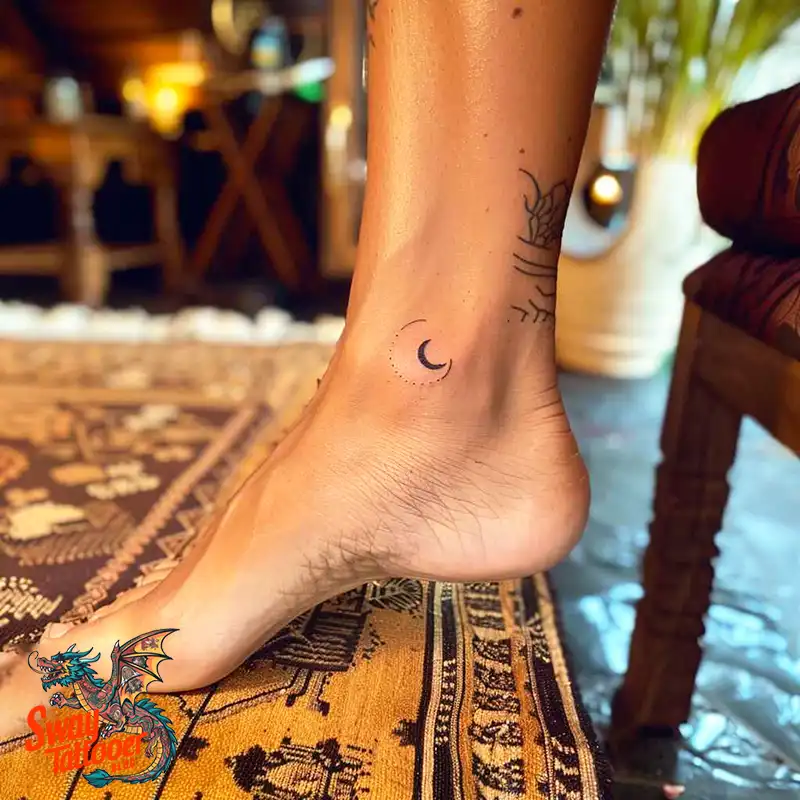
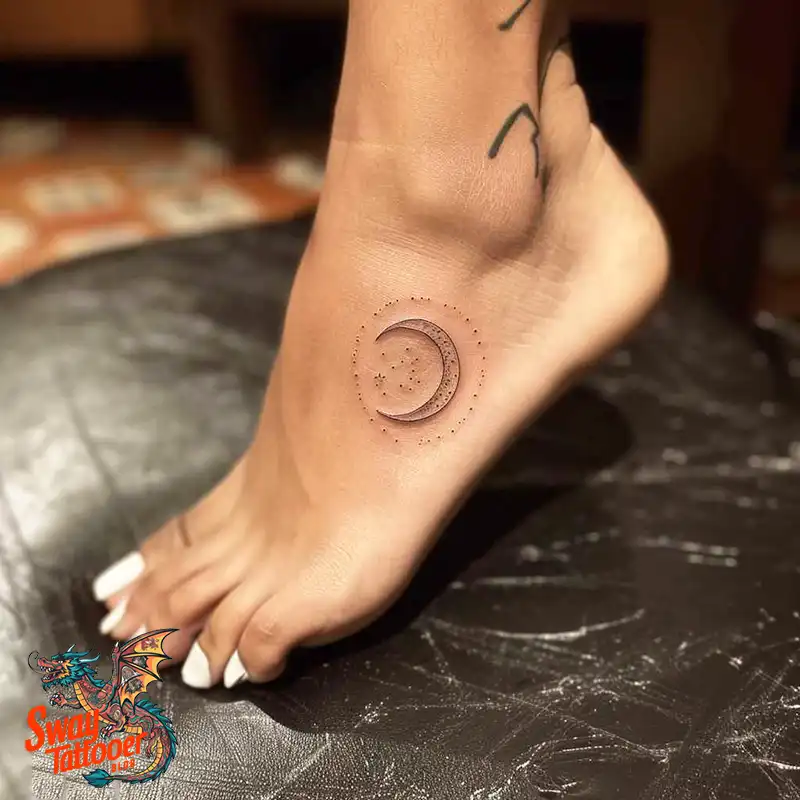
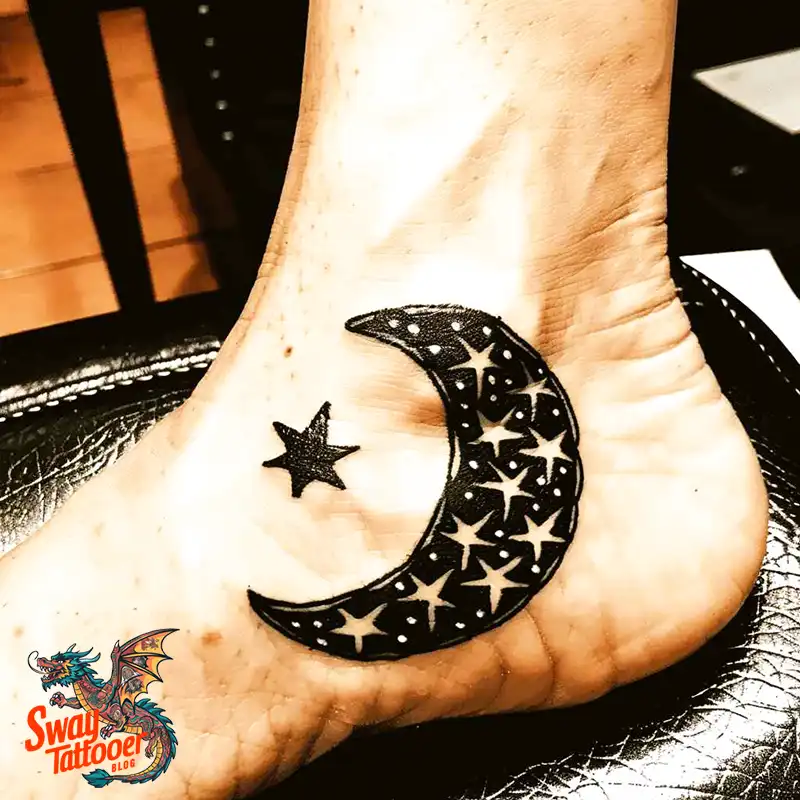
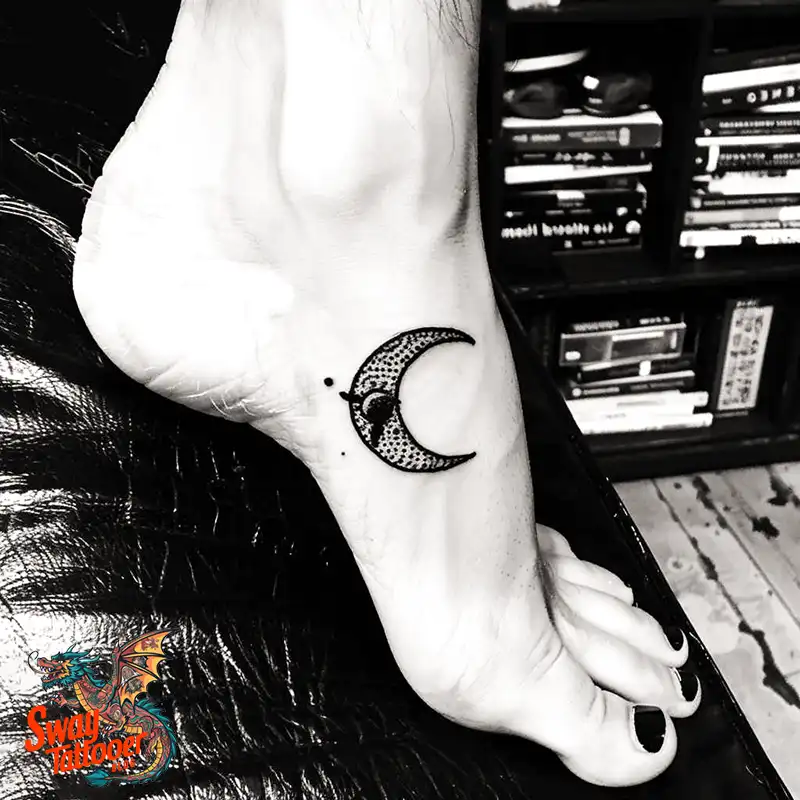
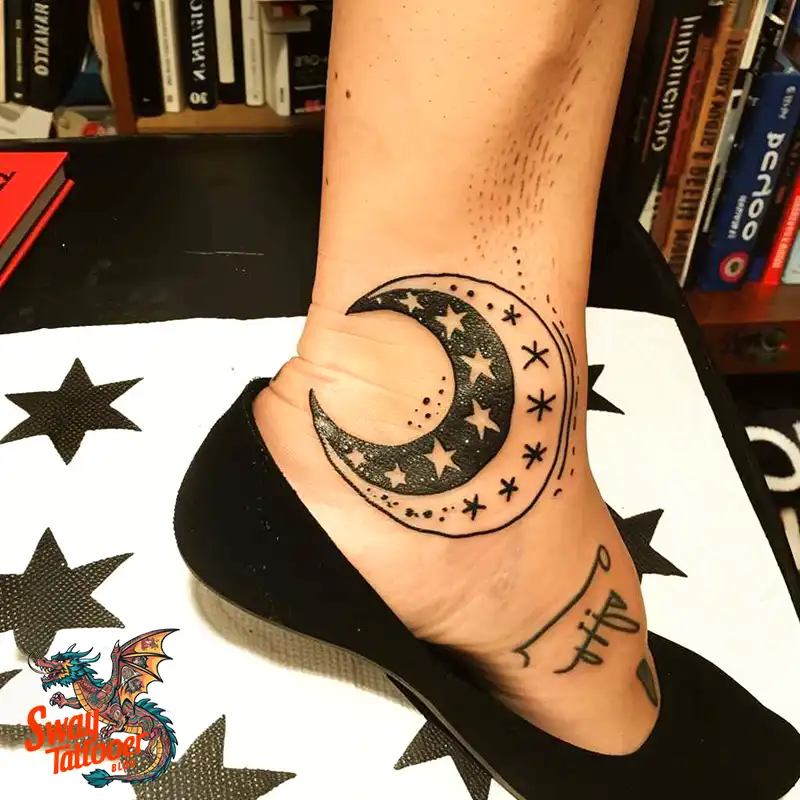
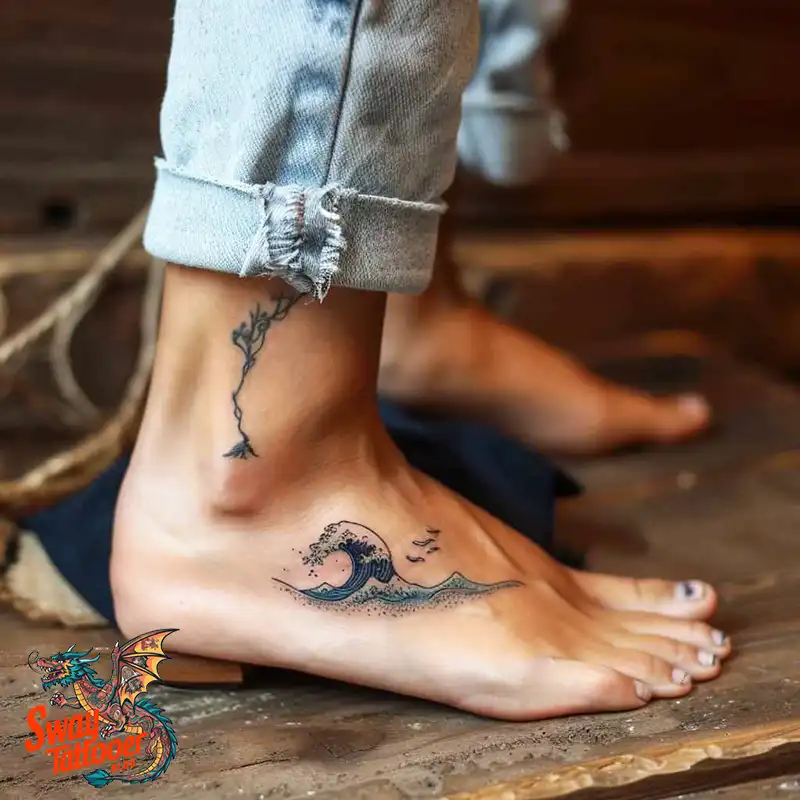
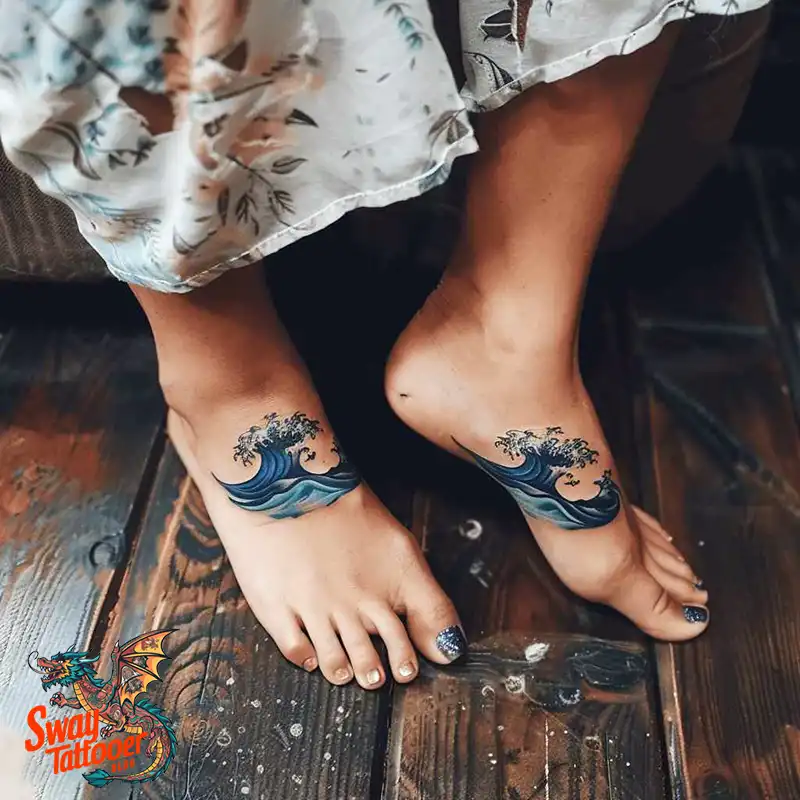
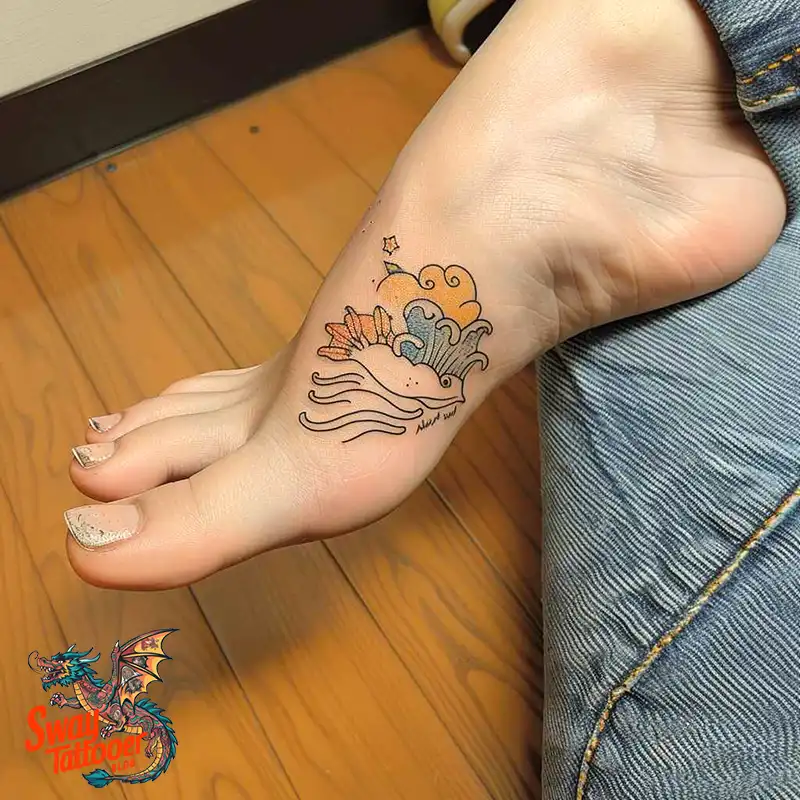
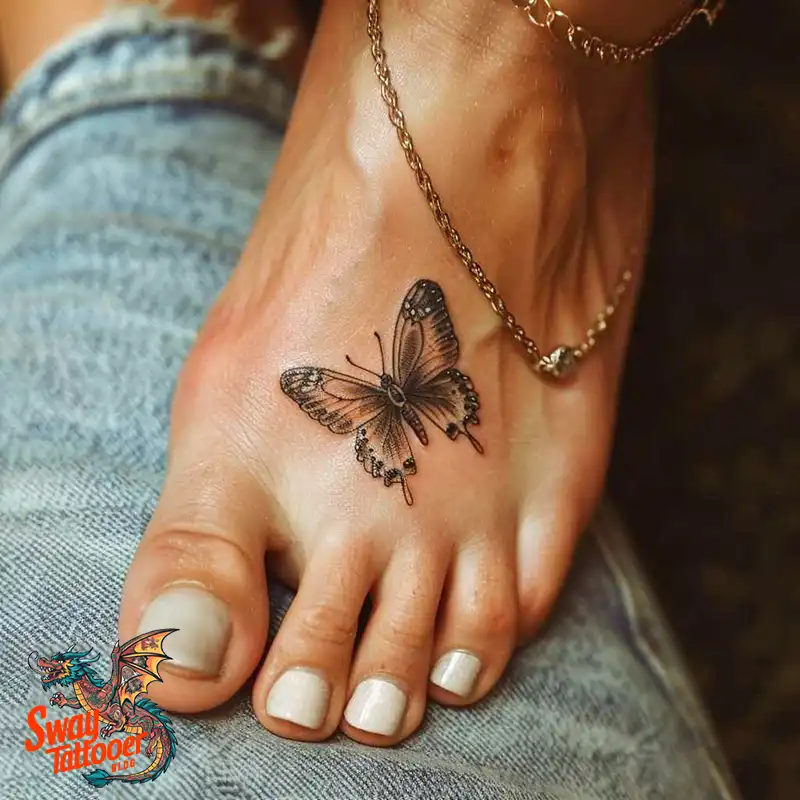
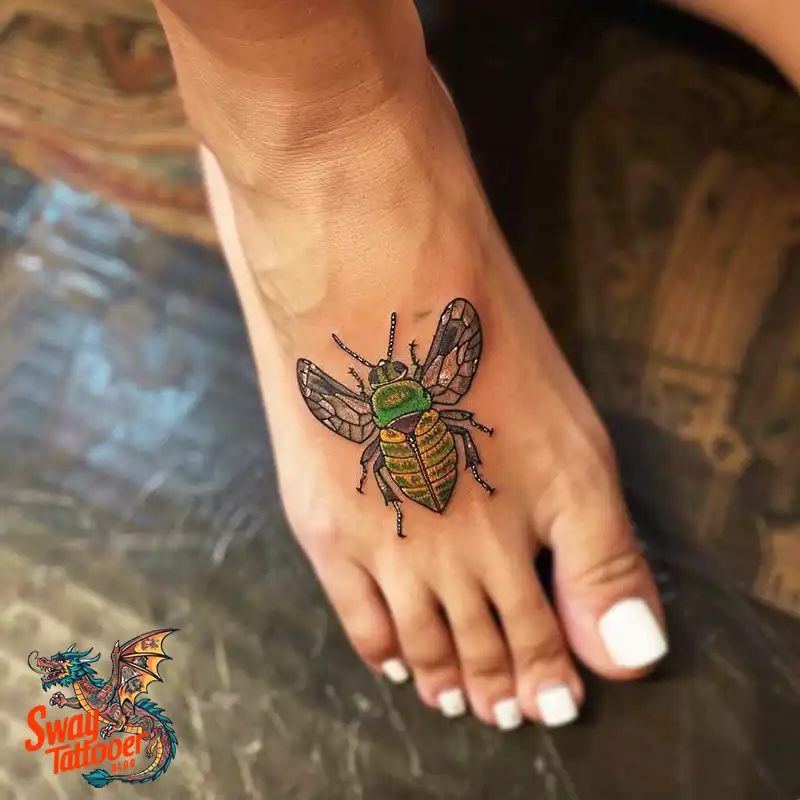
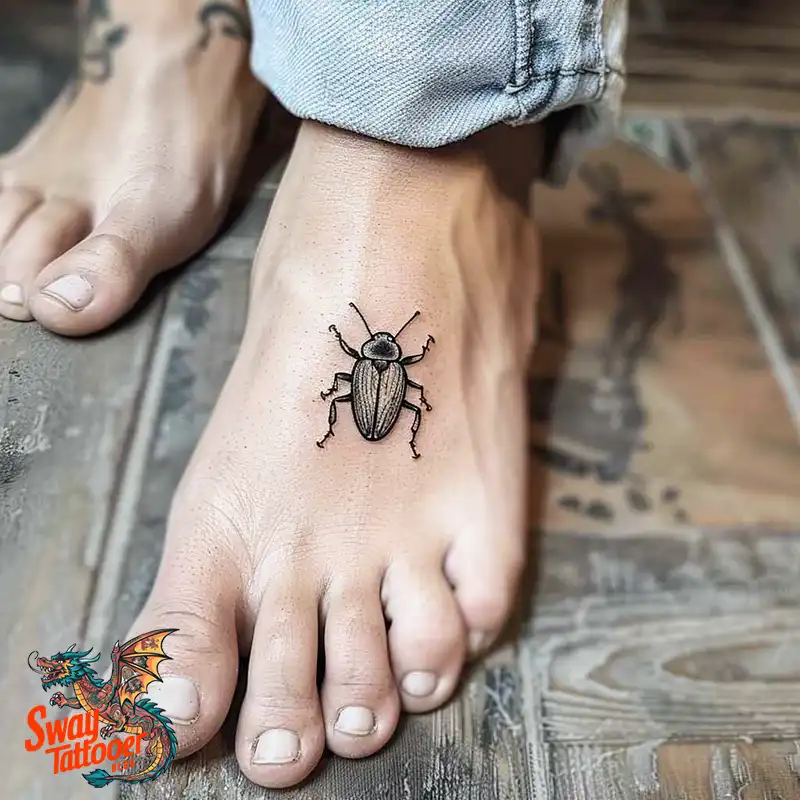
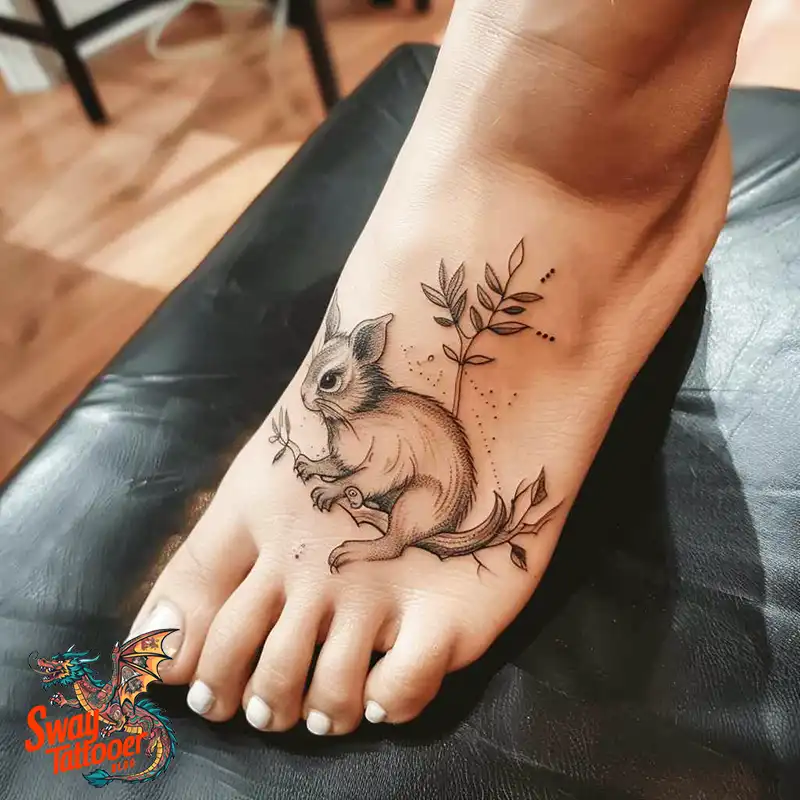
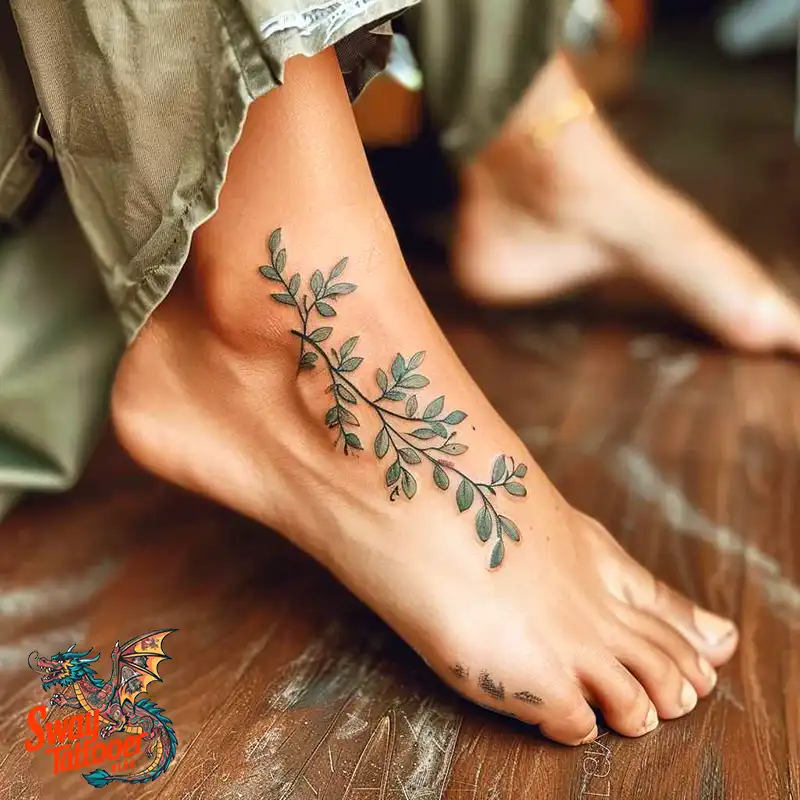
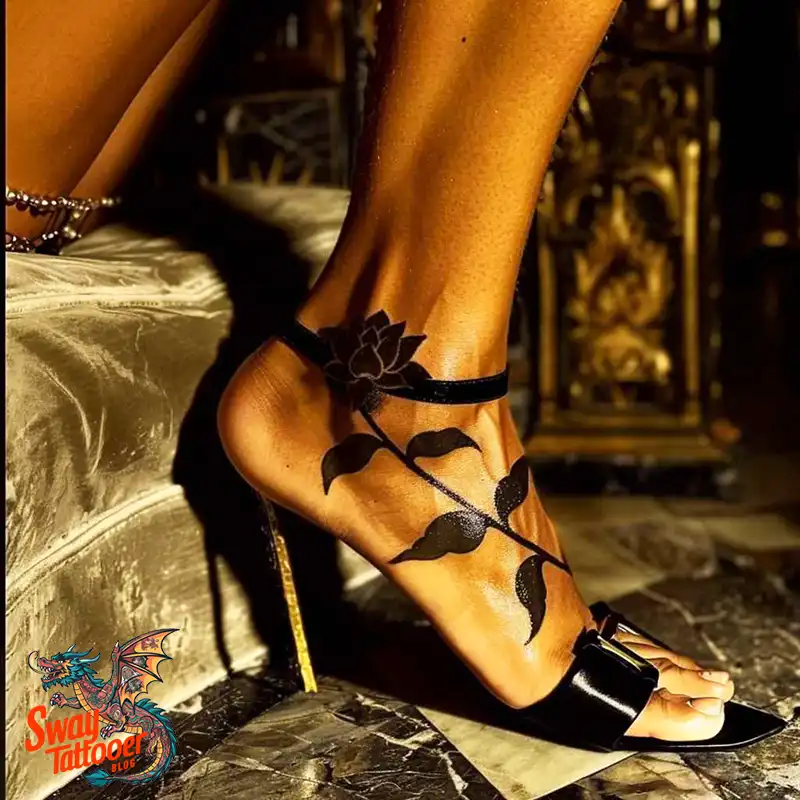
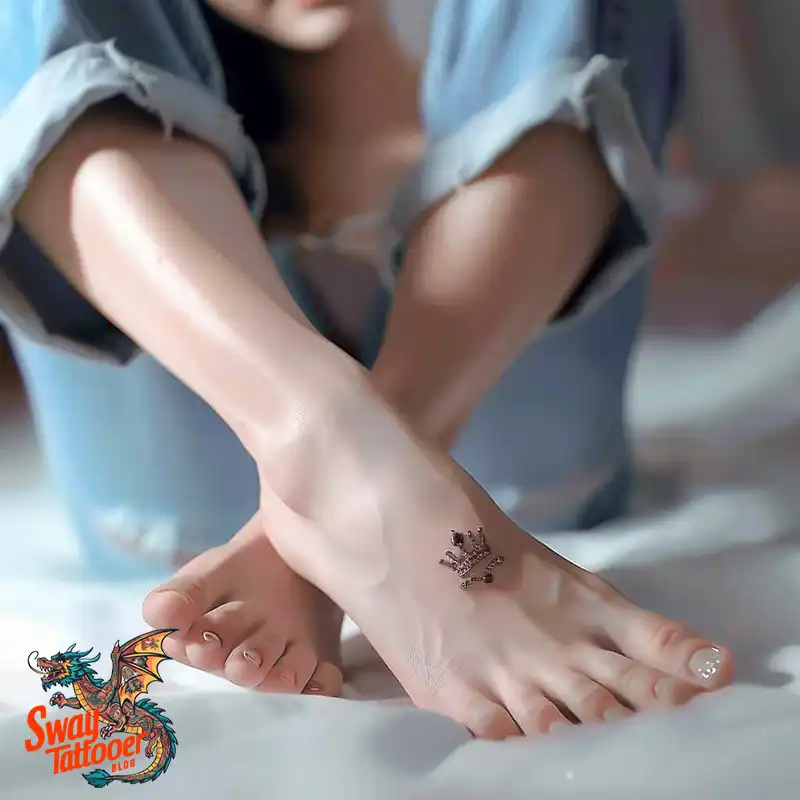
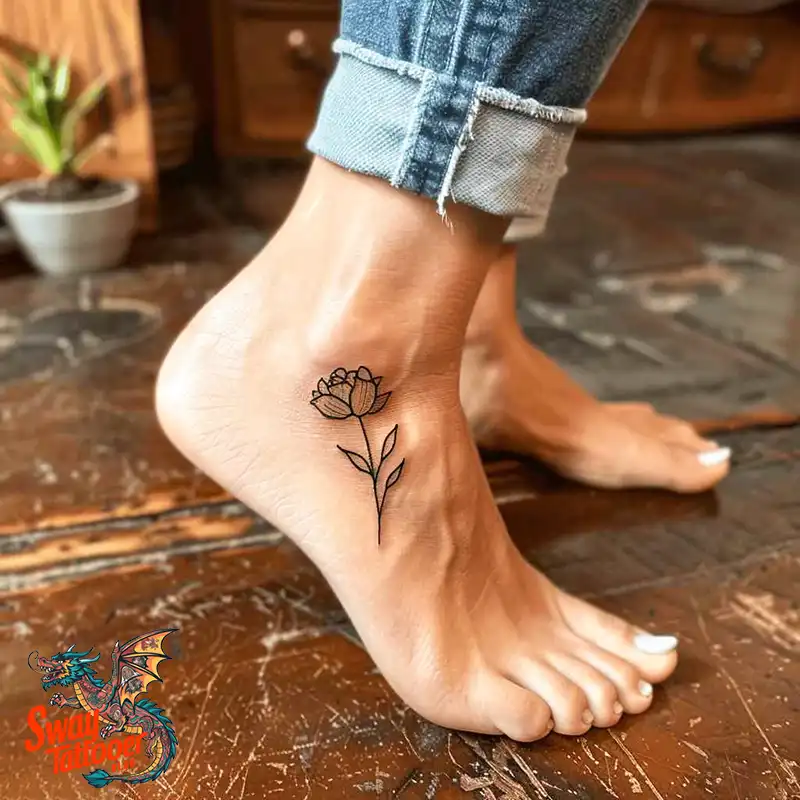
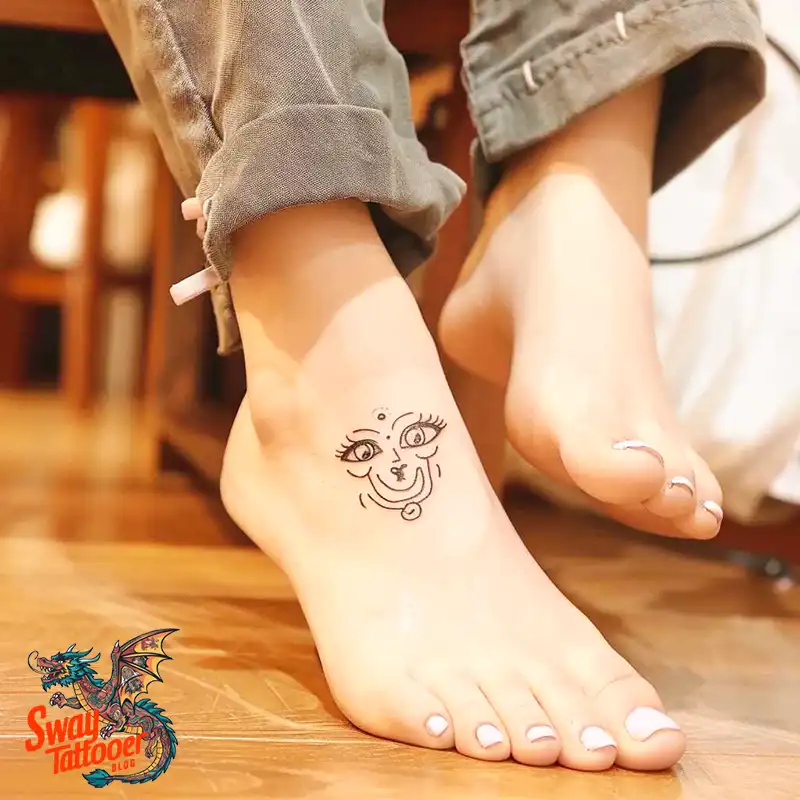
Many Variations Available for Foot Tattoos
Foot tattoos have recently become a trend. Distinctive in their own appeal, they hold immense creative potential. As part of the human body, it is a very personal place, but discreetly so. They can be bold or as understated as one would wish. In this article, we will look at various types of foot tattoos with their short descriptions, relevance, and reasoning thereof.
1. Floral Foot Tattoos
Floral patterns are some of the most common foot tattoo types. The range can be from small, dainty flowers to big botanical composition pieces extending across the whole foot. Popular choices are roses, lotuses, and cherry blossoms.
Flowers have a lot of symbolic meanings. For example, roses represent love and passion to many, while lotuses signify spiritual awakening and purity. The natural curve of the foot also adds to the aesthetics of floral designs since they are most in demand among lovers of tattoos.
2. Mandala Foot Tattoos
Mandalas are intricate circular designs rooted in both Hindu and Buddhist traditions. Traditionally, mandalas are symmetrical and comprised of minute geometric patterns.
Relevance:
Mandalas are the representations of the universe and the concept of unity and harmony. They are an essential part of spiritual and meditation methods; hence, people who want to feel the connection with their inner self more powerfully prefer choosing this design. The symmetry of mandalas, along with the natural shape of the foot, exudes the visual and symbolic balance.
3. Script and Lettering
Script tattoos are words, phrases, or quotes in beautiful or decorative font. They can be placed along the arch, the side, or on top of the foot.
Relevance:
Words can be so powerful, and to have a meaningful quote or the name of loved ones inked on the foot is something one can keep being reminded daily of values, loved ones, or personal mantras. The surface of the foot provides a discreet yet accessible canvas for these meaningful inscriptions.
4. Animal Foot Tattoos
Animal tattoos can be very realistic or very stylized and abstract. Common designs for foot tattoos include birds, fish, butterflies, and even mythological creatures like dragons.
Relevance:
Animals can have specific meaning and personal significance. A butterfly may represent change and rebirth, while a dragon may symbolize power and intelligence. The shape of the foot lends well to active designs for animals that are in motion.
5. Tribal and Ethnic Foot Tattoos
Summary:
Tribal tattoos are inked in bold black lines, following a geometric pattern of decoration. The inspiration comes from various indigenous cultures all over the world-including the Polynesians, Maoris, and U.S. native tribes.
Relevance:
Most often, tribal tattoos have strong cultural meanings that represent heritage, identity, and community. To people of descent from such traditions, these kinds of tattoos might be a strong means of expressing pride and attachment to their roots. The foot is a conspicuous yet personal place for such culturally packed designs.
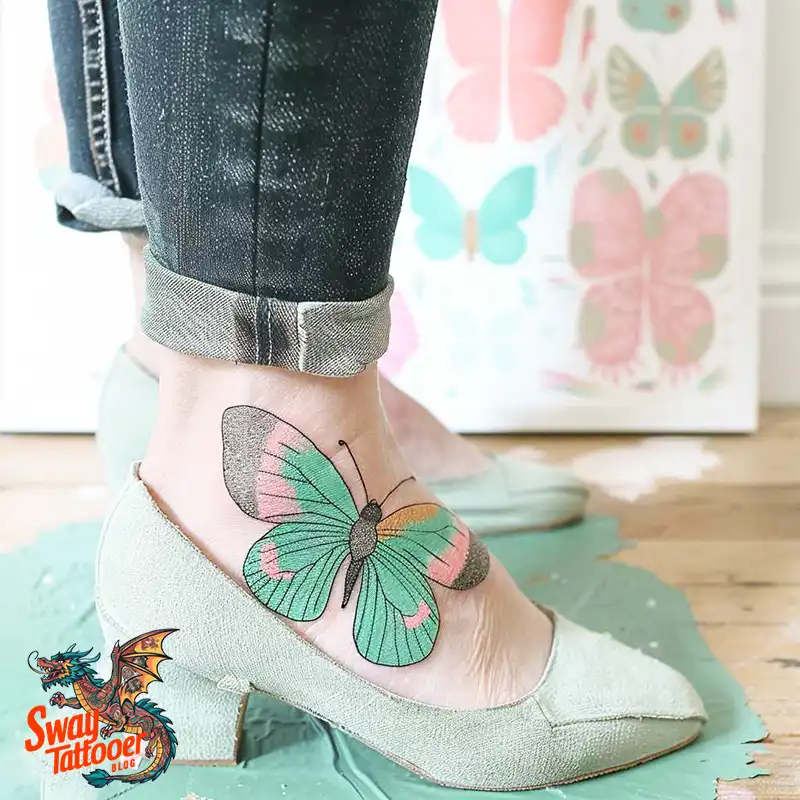
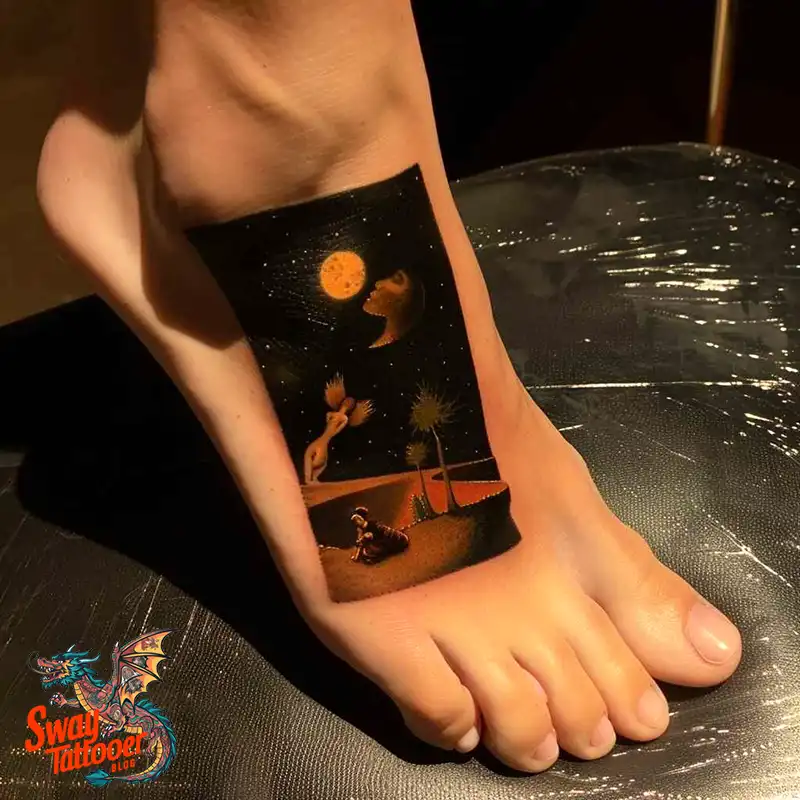
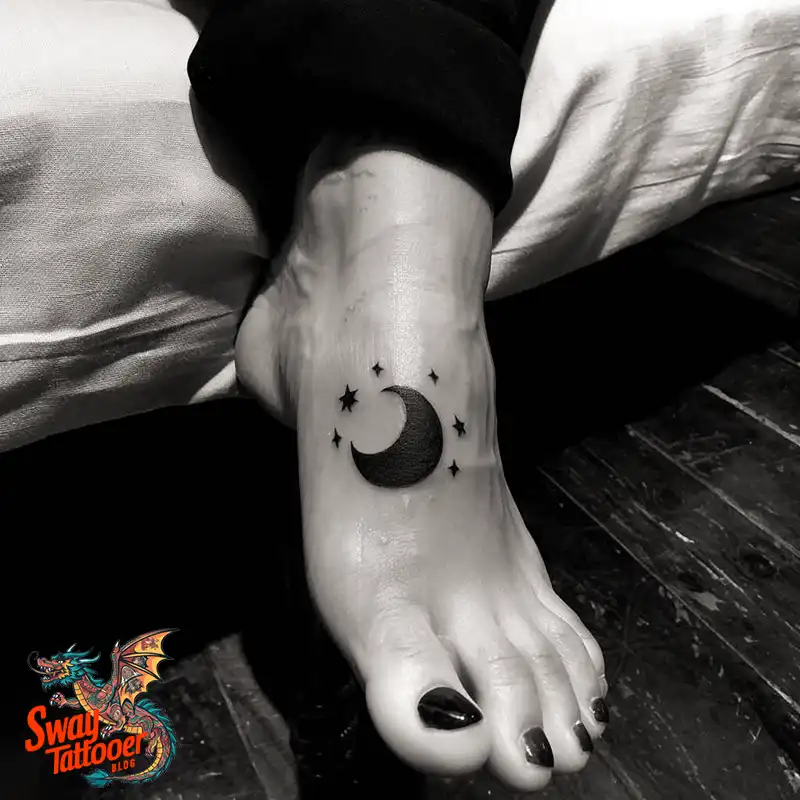
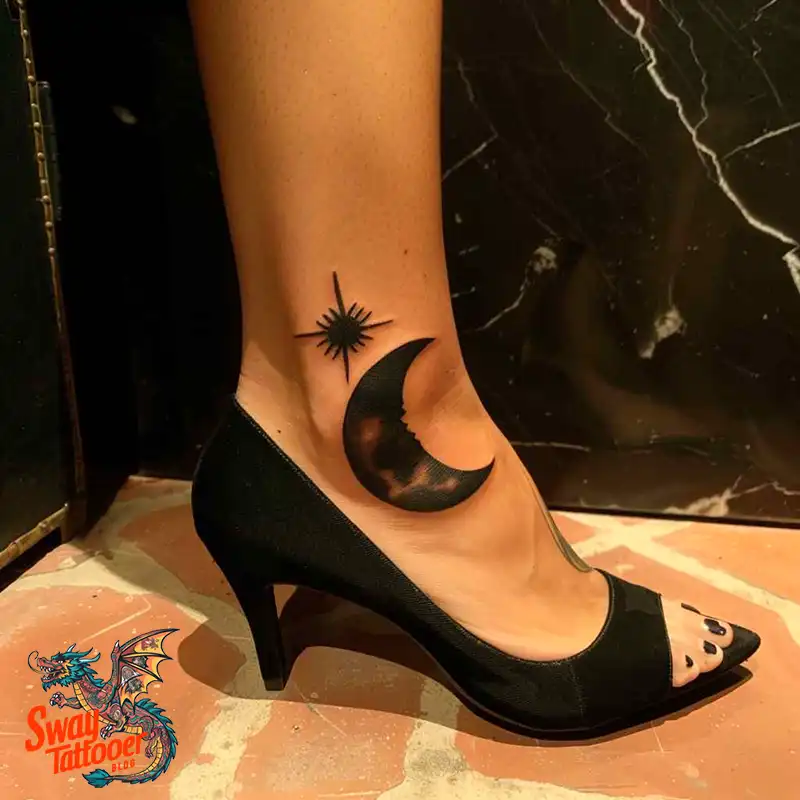
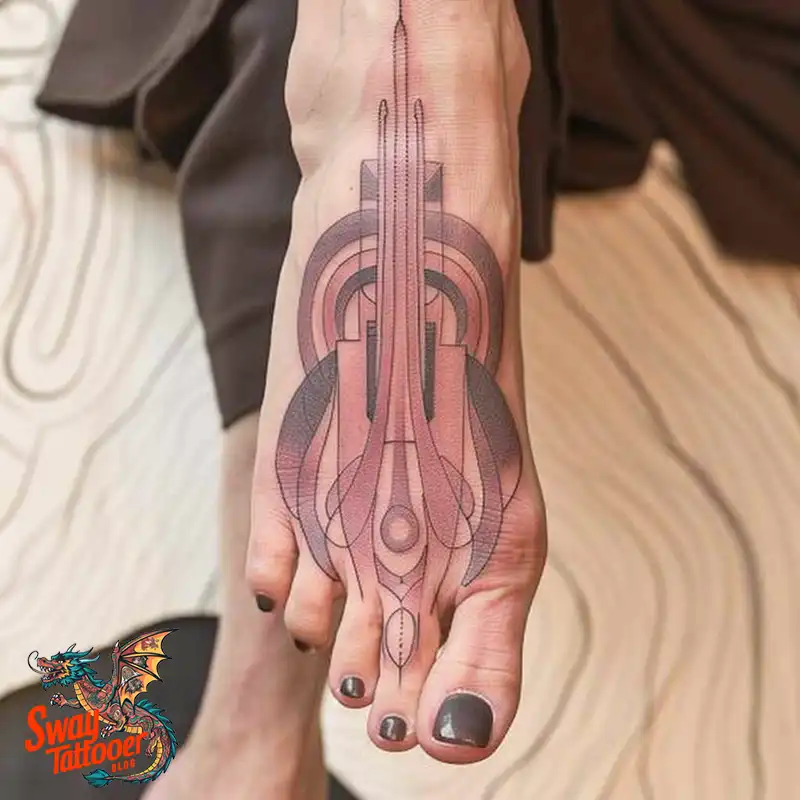
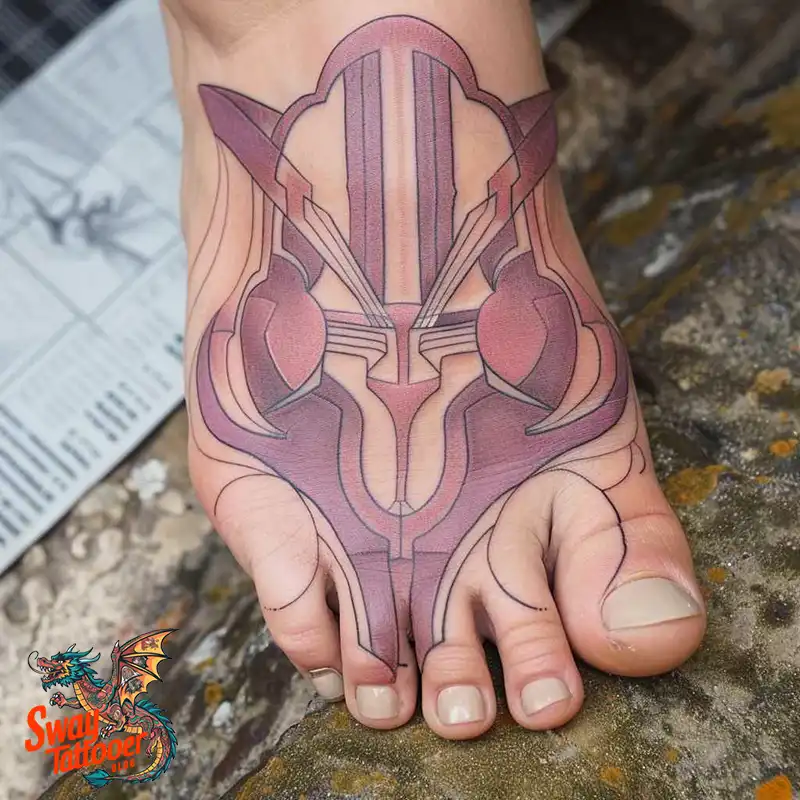
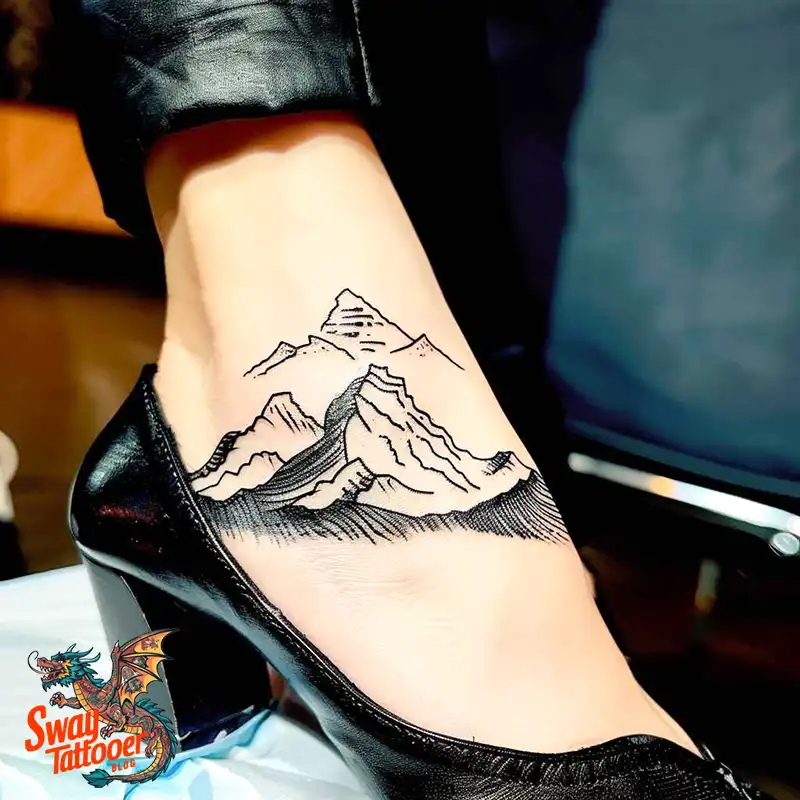
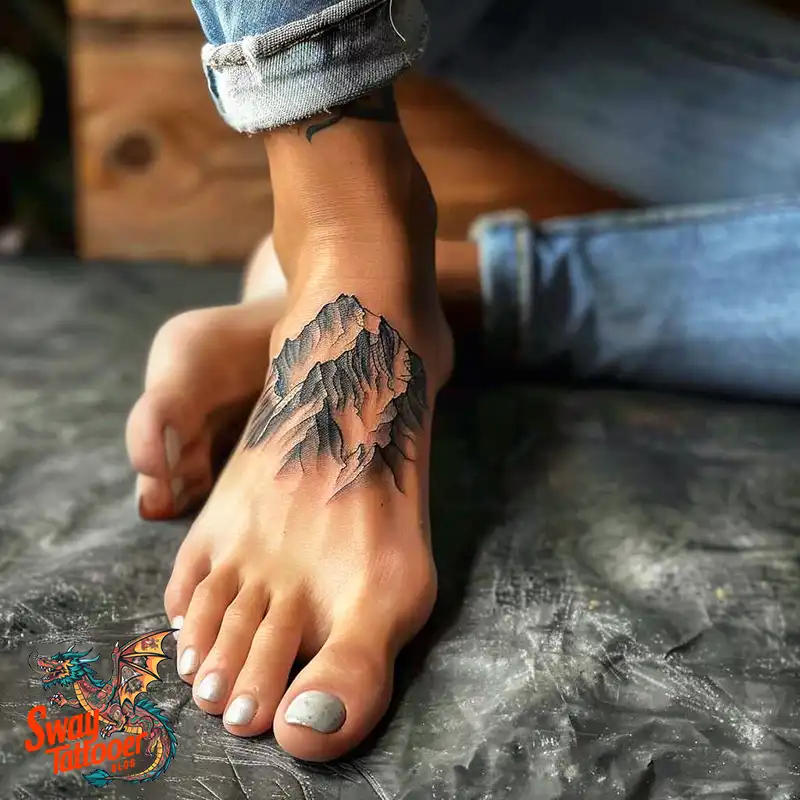
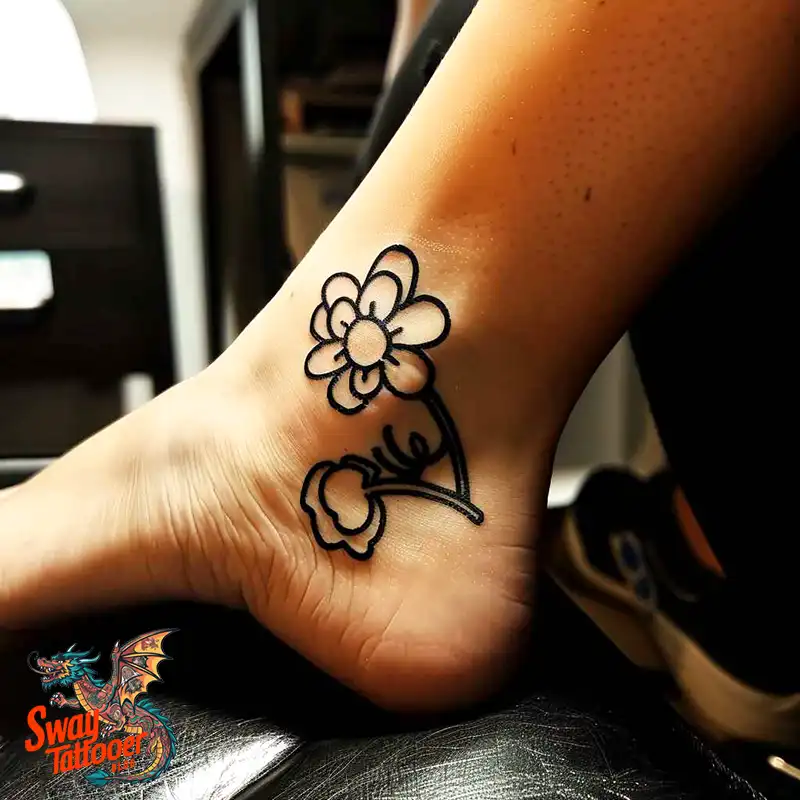
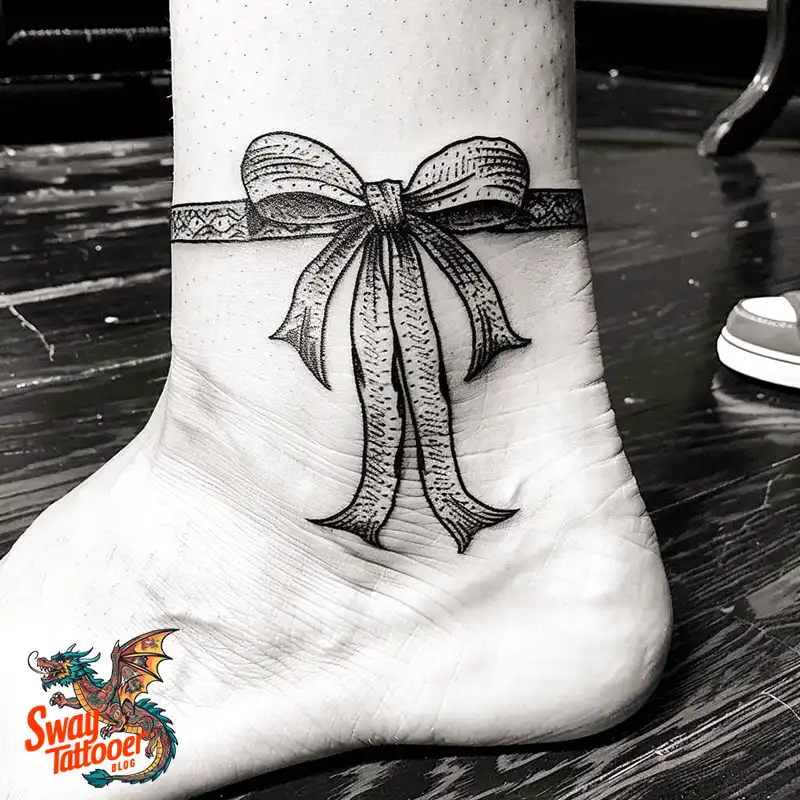
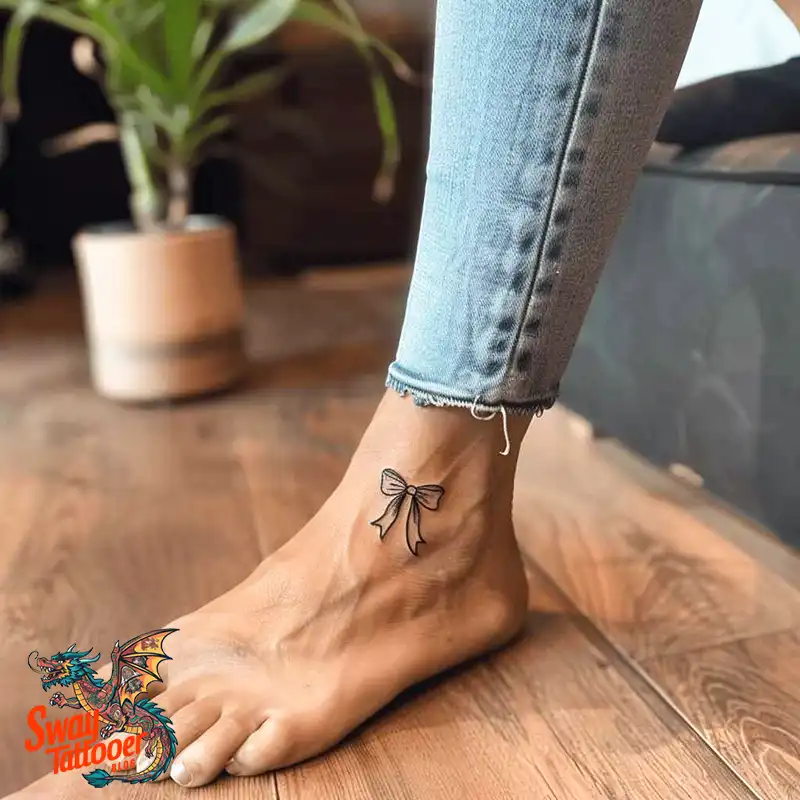
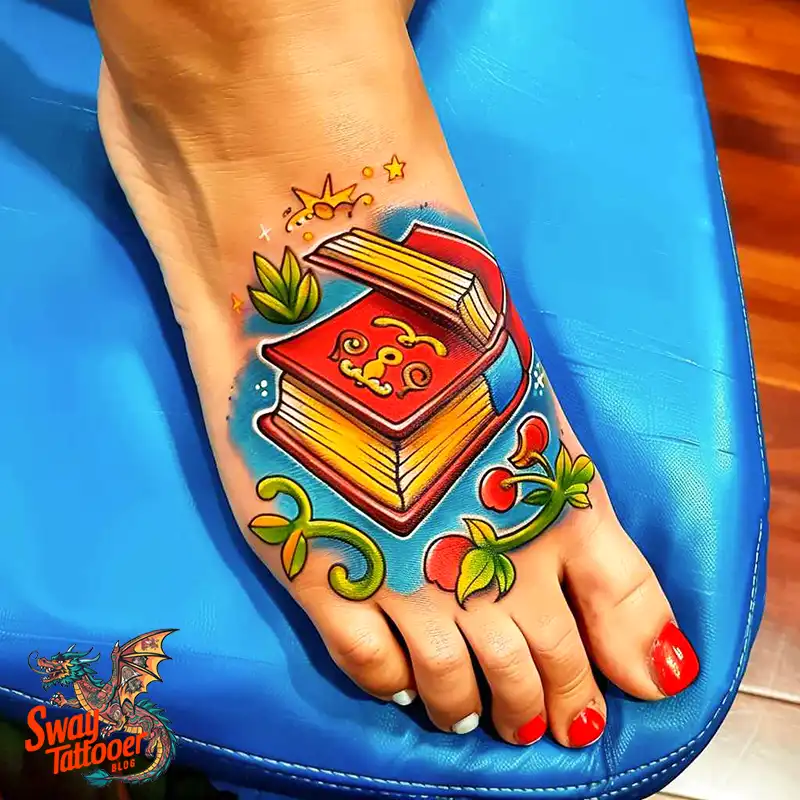
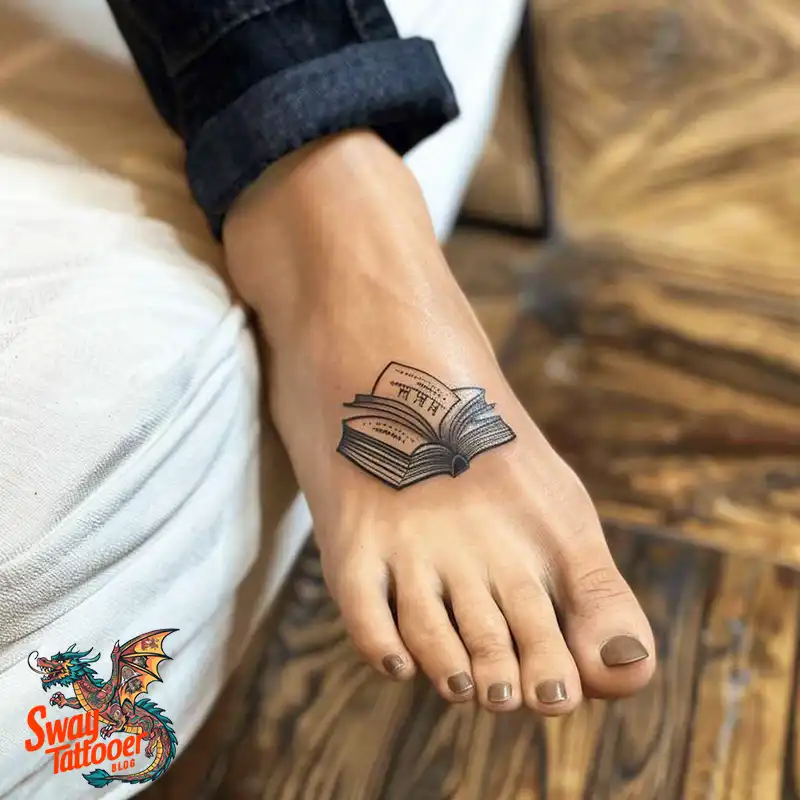
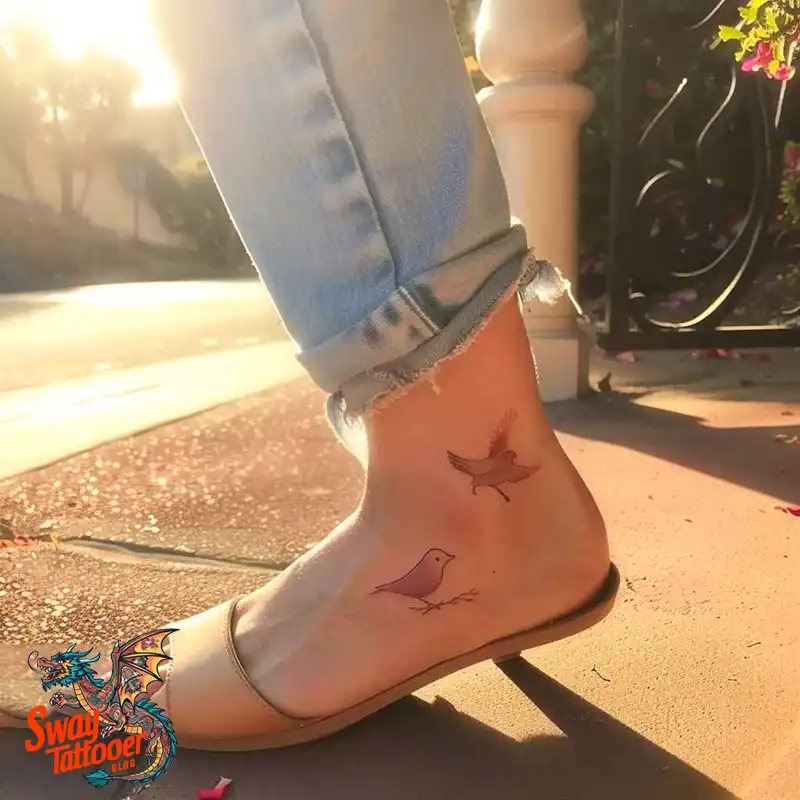
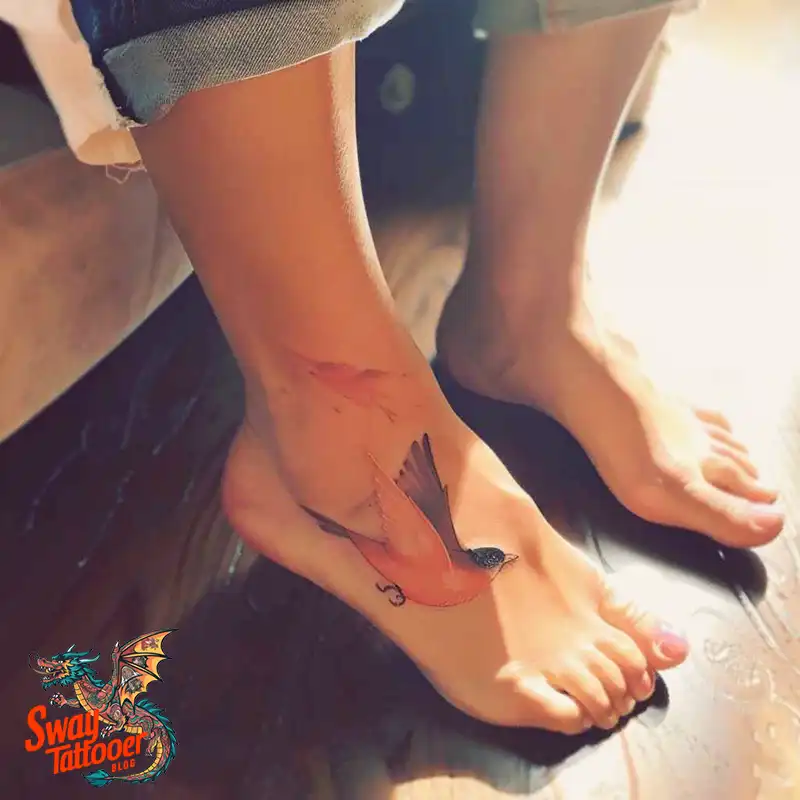
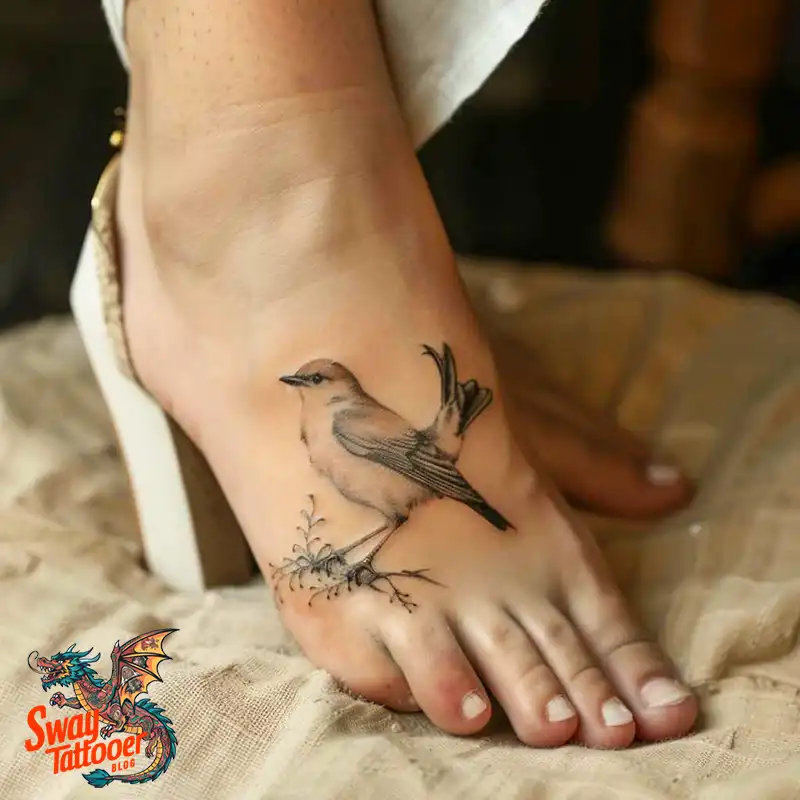
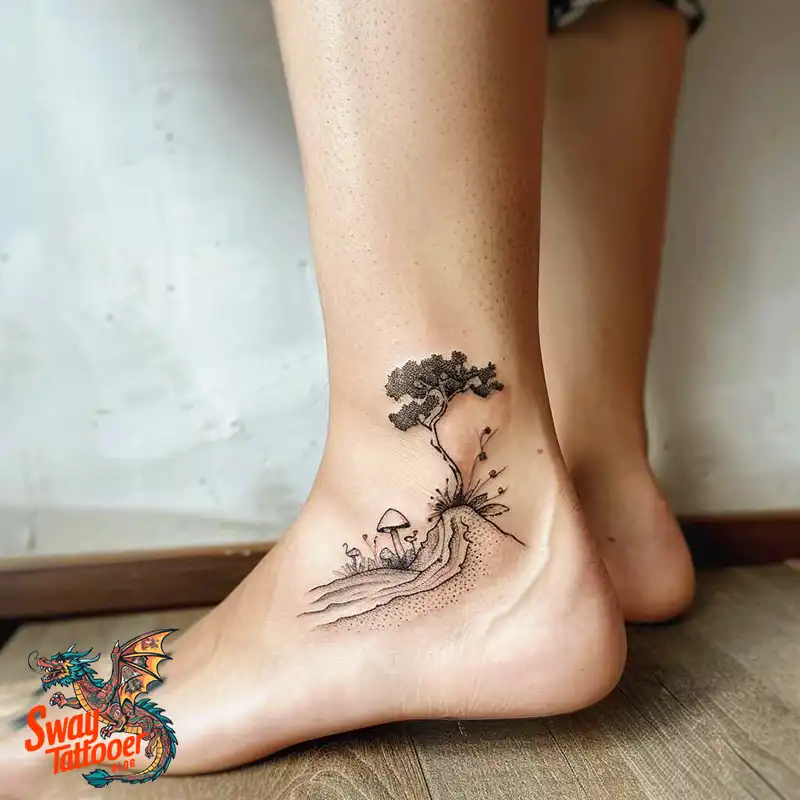
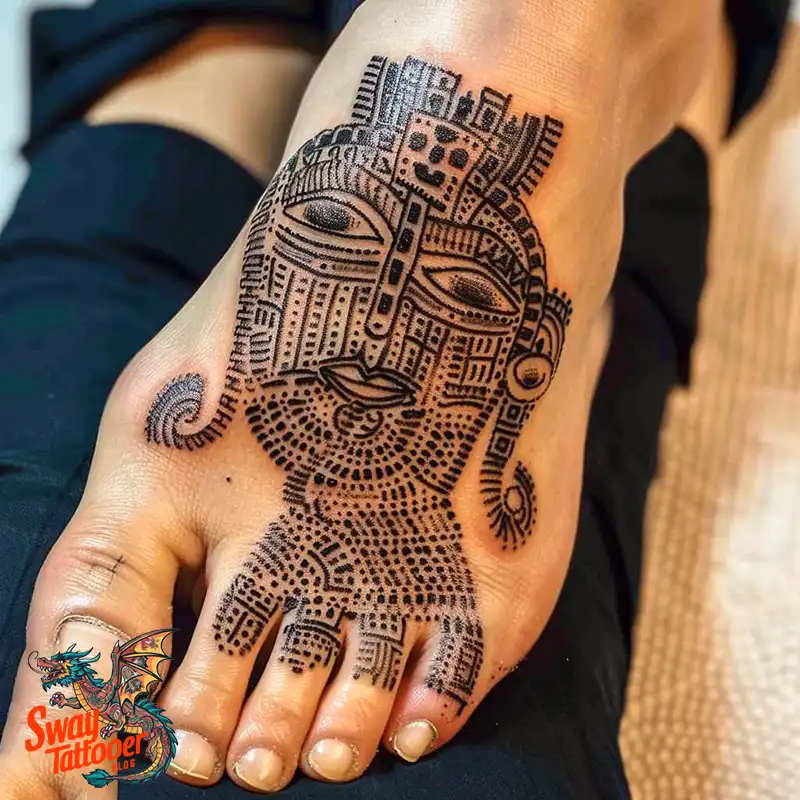
6. Henna-Inspired Foot Tattoos
Summary:
Henna tattoos are a replication of traditional body art, using henna paste. These are usually adorned with very intricate flowy patterns wrapping over the feet and ankles.
Relevance:
Henna art has existed for years in many cultures around the world for ceremonial and celebratory purposes. Permanent tattoos in the style of henna can be a beautiful tribute to these customs, marrying cultural appreciation with modern tattooing. The design is very intricate and sets well with outlines of the feet.
7. Minimalist Foot Tattoos
Minimalist tattoos apply to simple or small lines and shapes pigmented for clean, subtle designs. The symbols can range from a small symbol to tiny animals or even an abstract pattern.
Relevance:
Minimalism appeals to those who avoid grandeur, instead opting for subtlety and simplicity. They believe that significant meaning or idea can be expressed without the need to make an elaborate design-hence proper for those of low-key yet meaningful predispositions. The foot area is limited and thus ideal for small and minimalist designs.
8. Nautical Foot Tattoos
Nautical tattoos consist mainly of nautical elements such as anchors, a compass, ships, and waves. Each of these designs is drawn up with an elite,
Nautical tattoos reflect sailors and the world of the sea; they symbolize progress, adventure, and survival.
The appropriate wearer of this category would be any person attuned to the great spirit of the sea or passionate about traveling and exploring new places. The foot is an allegorical position, appropriate to the subject of journey and mobility.
9. Celestial Foot Tattoos
Celestial tattoos include stars, moons, suns, and constellations. It is an straightforward or a very elaborate design-all depending on one’s preference.
Relevance:
Celestial images often symbolize dreams, aspirations, and the infinite nature of the universe. These kinds of tattoos may be harbingers of reminding one of one’s goals and how much is ahead in store for them. The foot being a small canvas for these images from the heavens often tends to enforce the surreal element in them.
10. Geometric Foot Tattoos
Geometric tattoos are based on shapes and other patterns to create striking designs; they can range from the simplest triangles and circles to highly complicated polyhedral forms.
Relevance:
Geometric tattoos pertain to precision, symmetry, and modernism. As earlier pointed out, most geometric tattoos symbolize order, structure, and the interrelating sense of all things. The anatomy of the foot creates creative placement possibilities that really enable accentuating the geometric balance of the design in question.
From stylized floral patterns to minimalist geometric symbols, there is a foot tattoo for every taste to fit any meaning. Whether it’s to showcase cultural heritage, spiritual self, or personal values, foot tattoos uniquely and intimately express one’s identity.
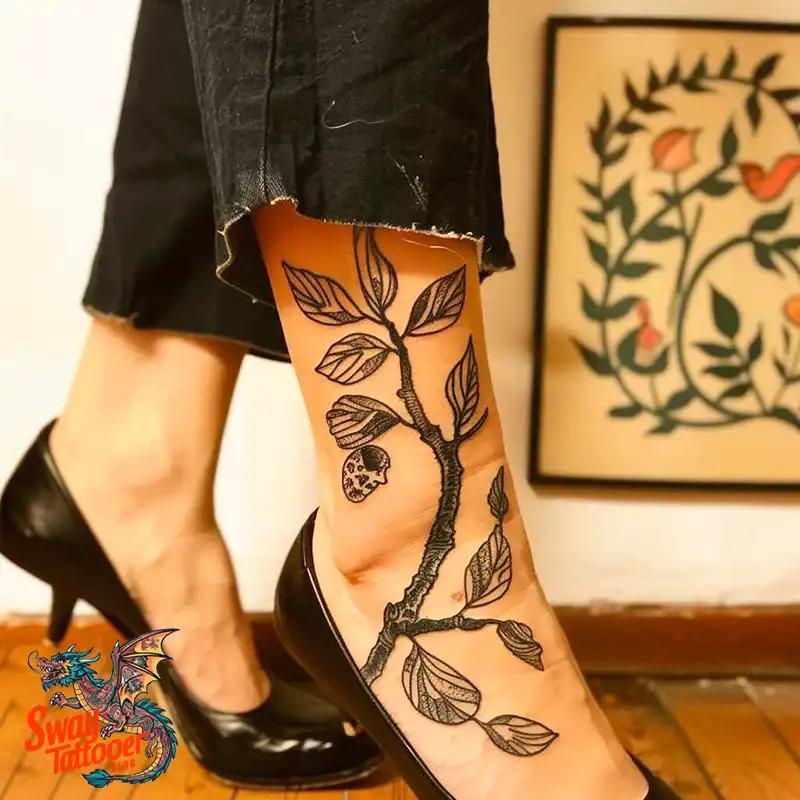

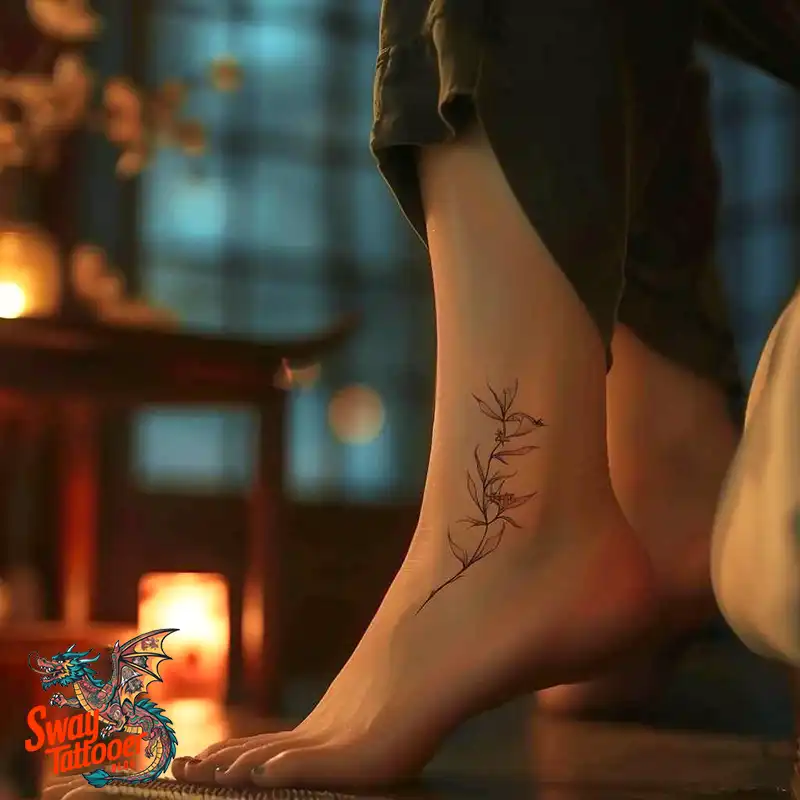
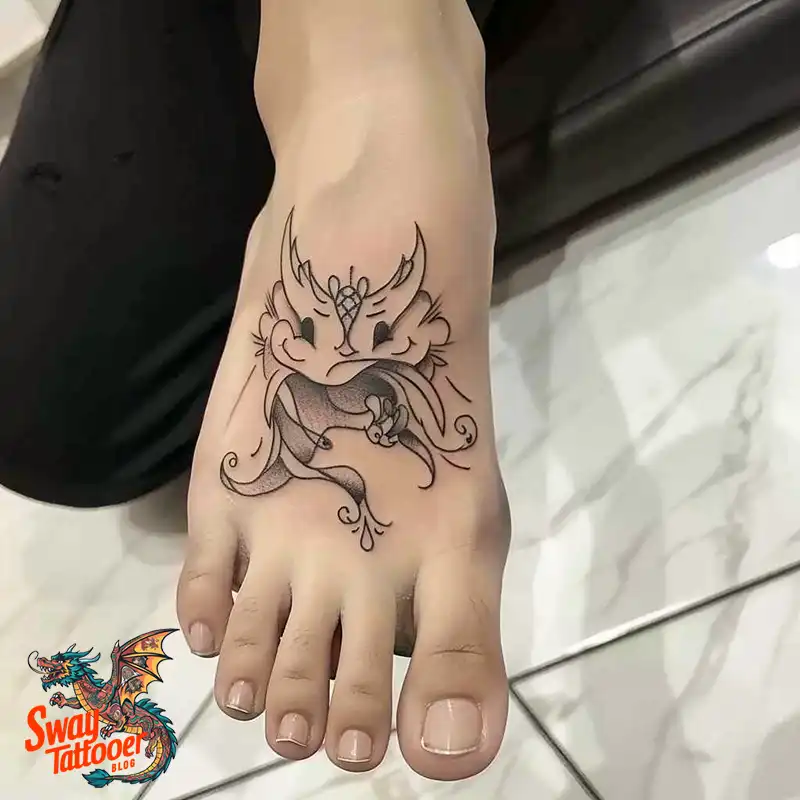
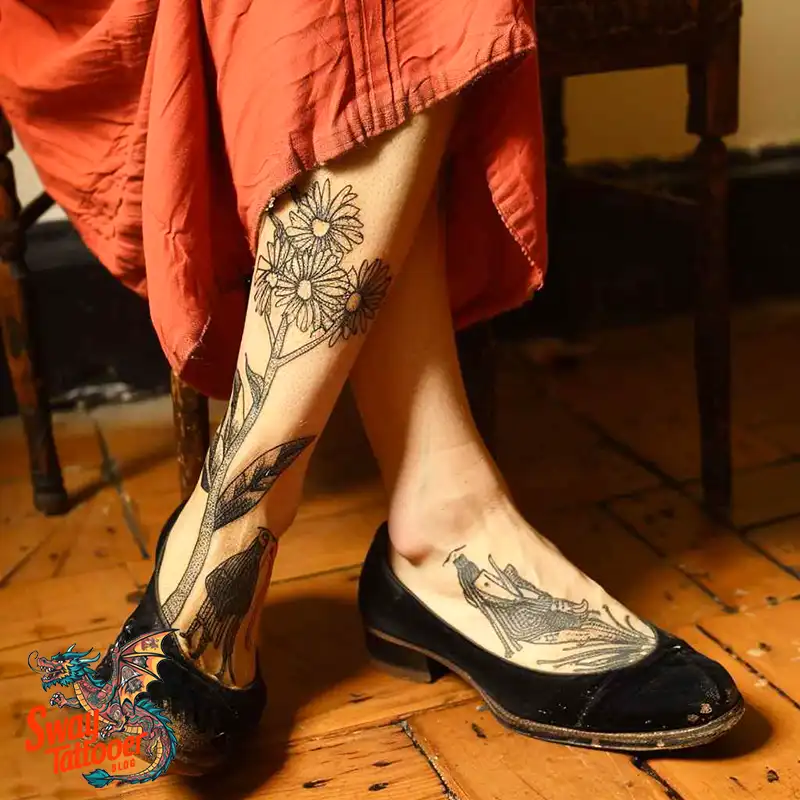
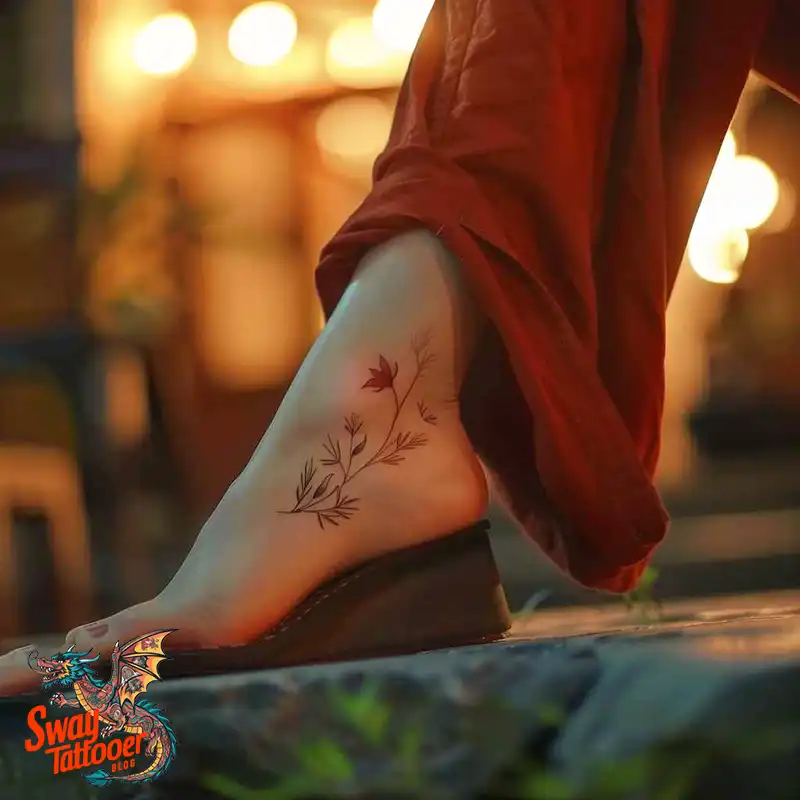
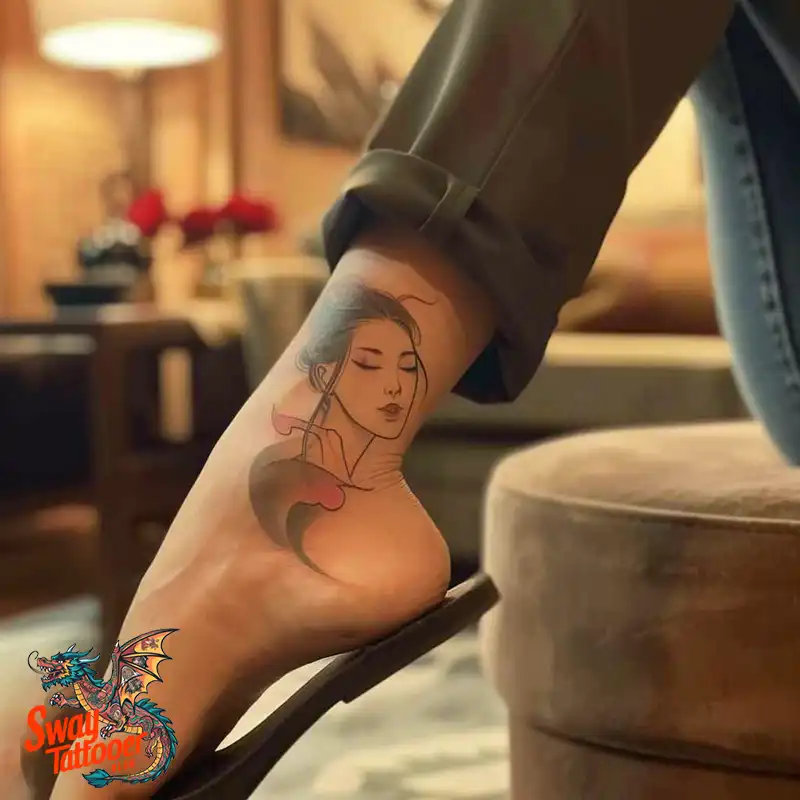
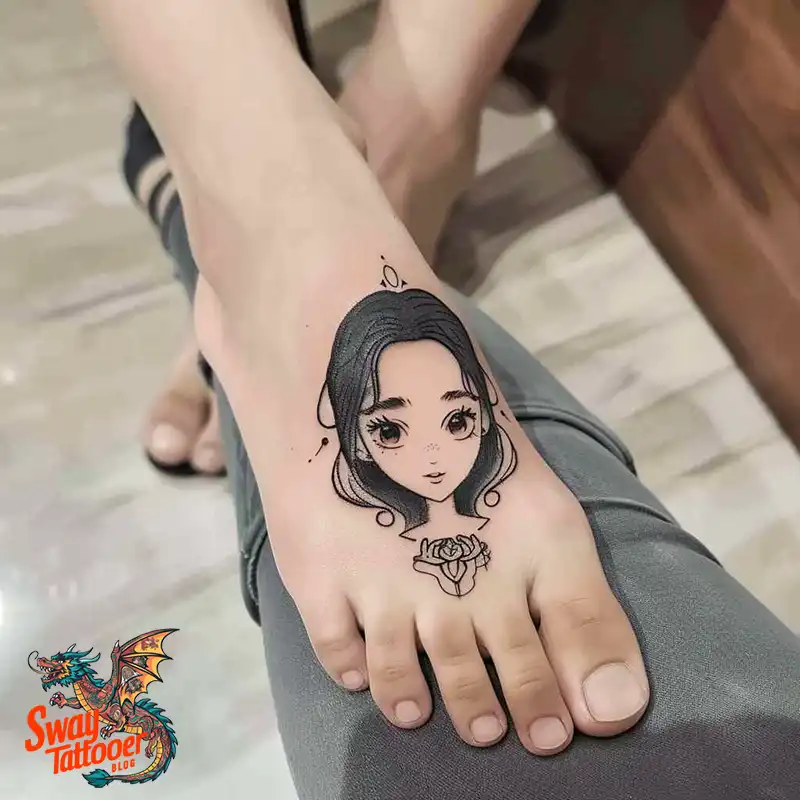
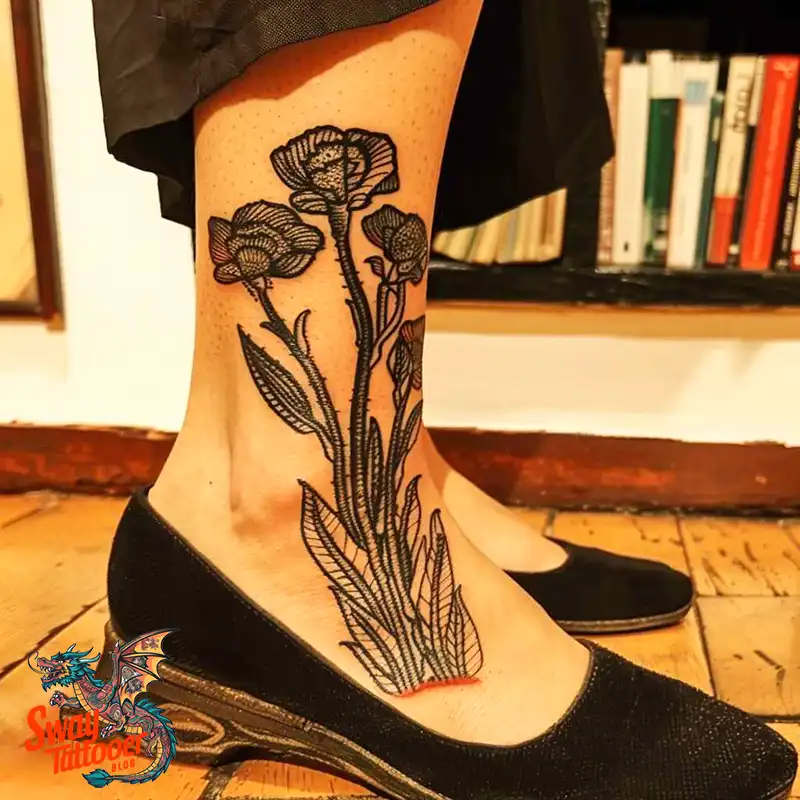
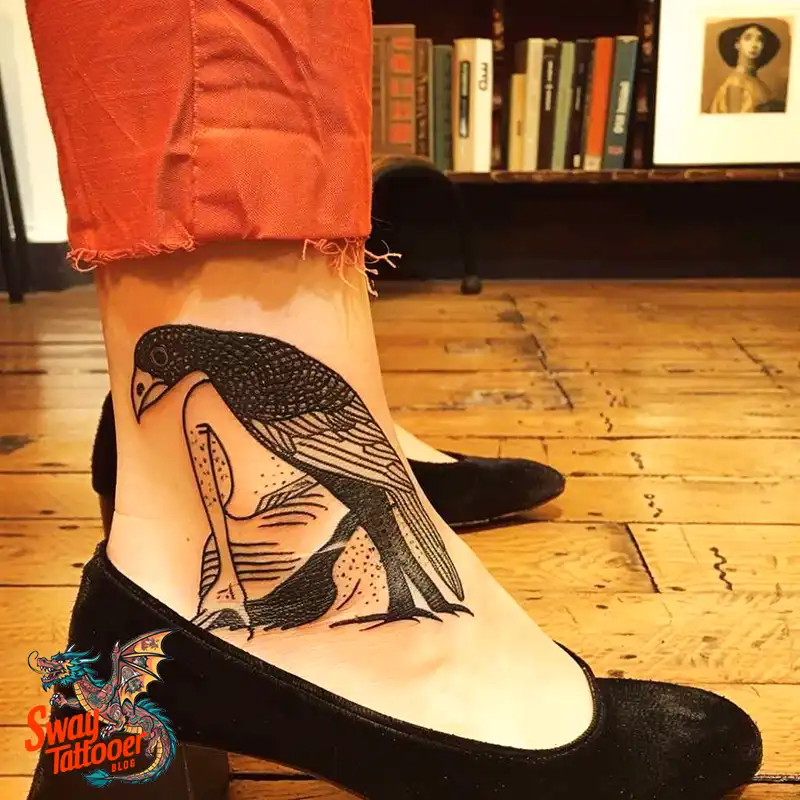
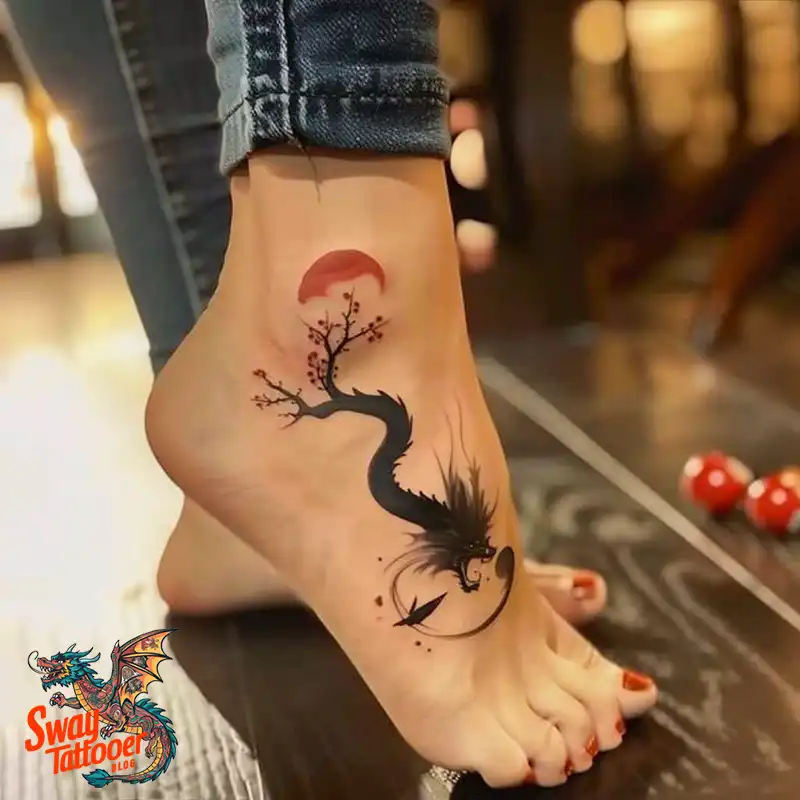
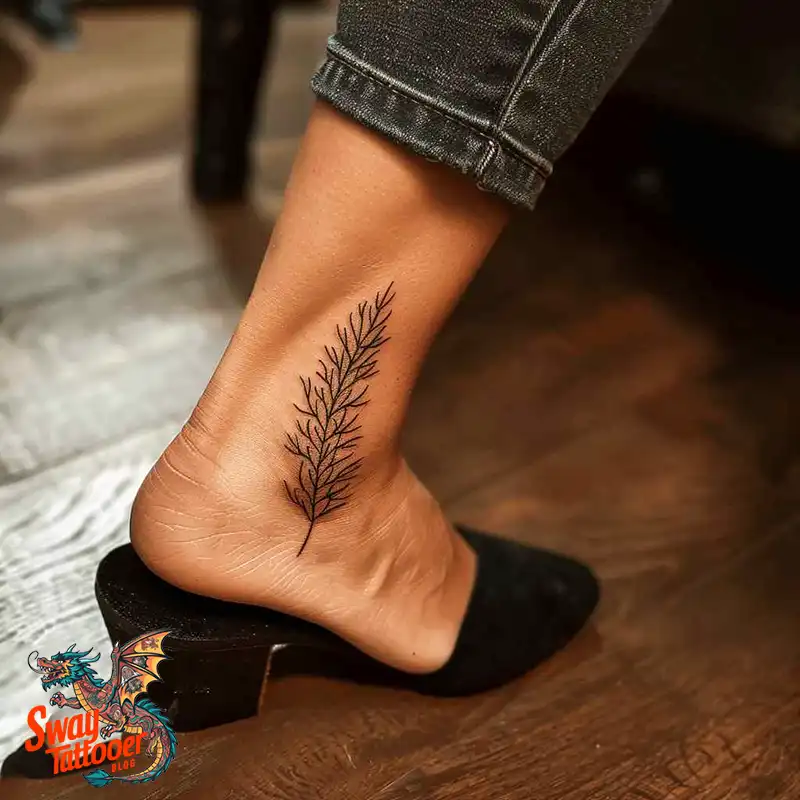
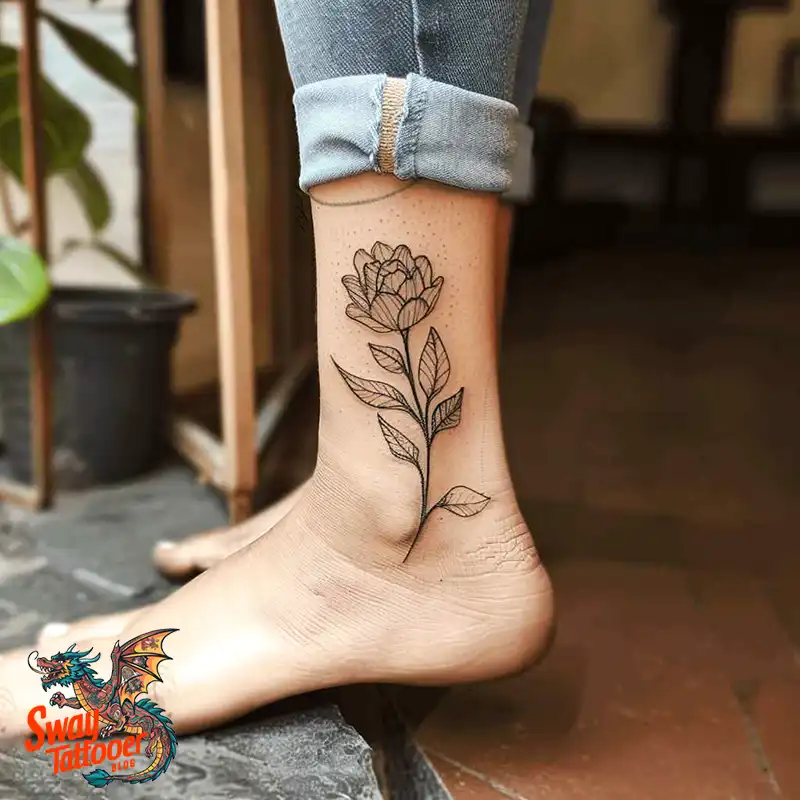
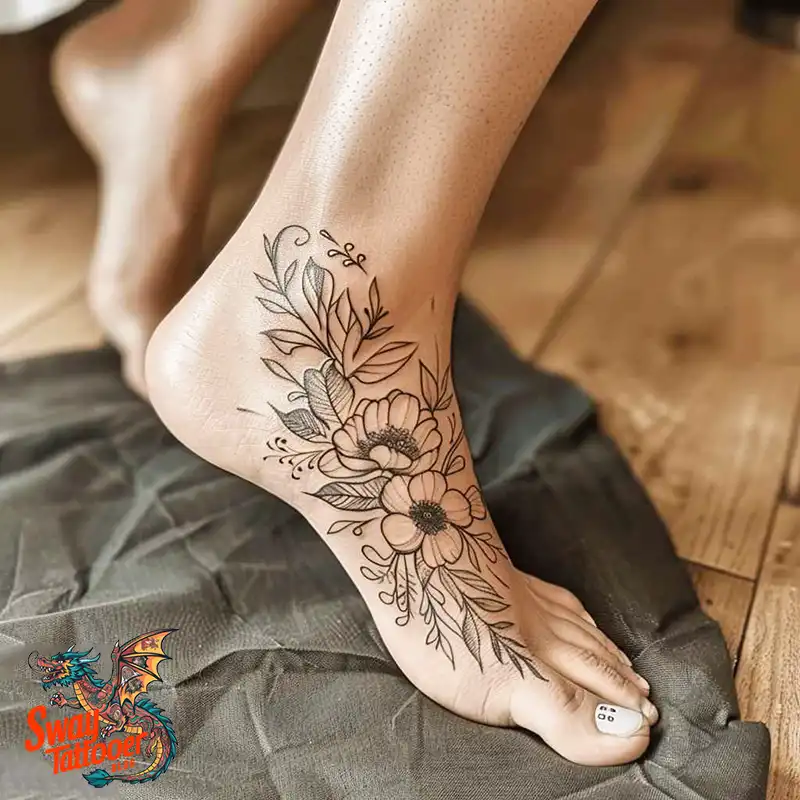
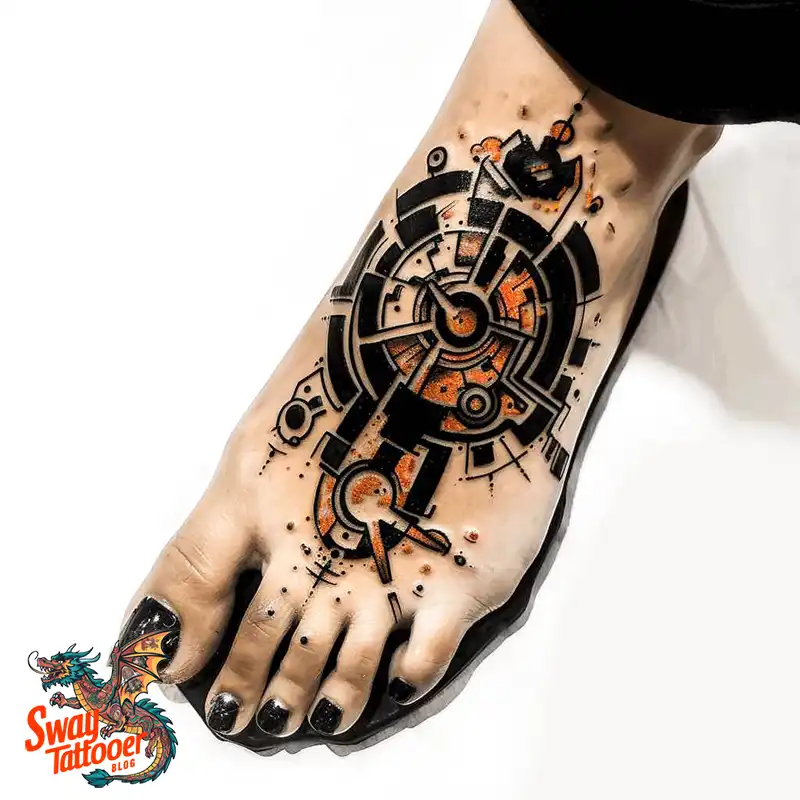
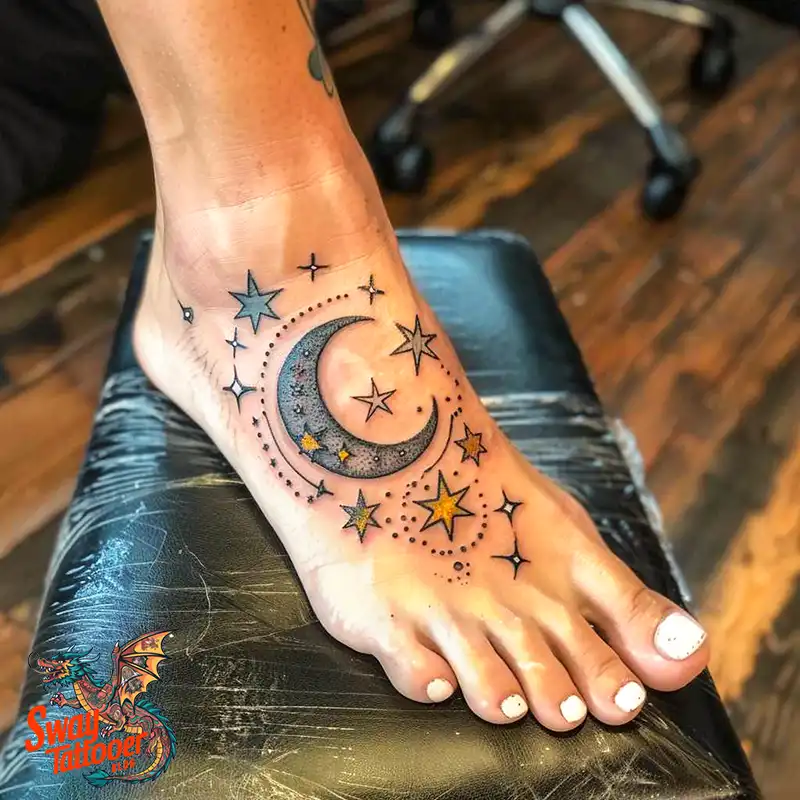
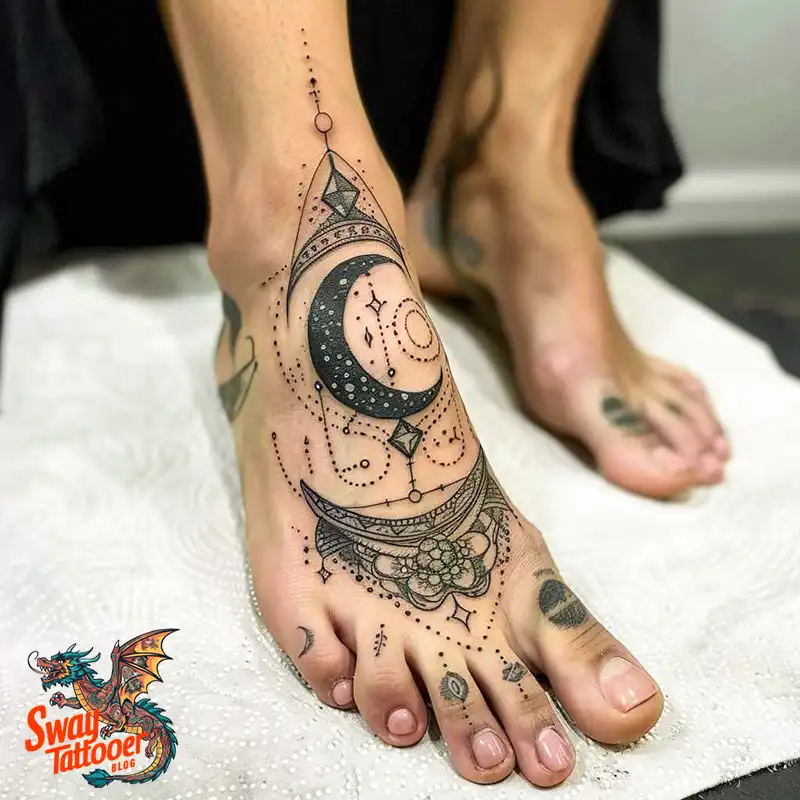
FAQ
Frequently Asked Questions (FAQ) About Foot Tattoos
Q1: How painful is a tattooing on the foot?
A1: Usually, foot tattoos are among those that hurt the most. The skin on your feet is thinner; there’s less muscle and fat to pad the bone, providing an intensified sensation of the needle. Levels of pain may vary depending on a person’s tolerance, location on the foot, and the design’s complexity. But for most of them, it’s tolerable, and the result justifies the effort.
2. How long does a tattoo of the foot heal?
A2: Healing times for a foot tattoo may vary, but usually, it takes 2 to 3 weeks just for the initial stage of healing. In its entirety, it takes up to 3 months in order for the tattoo to be fully healed, including the dermis. While healing, one must make sure to follow the aftercare instructions provided by the tattoo artist, which include keeping the tattoo clean and moisturized and not rubbing it against tight footwear.
Q3: Immediately after getting a tattoo done on my foot, can I wear shoes?
A3: It’s best that you don’t wear closed shoes over your feet’s newly acquired tattoos. In such a situation, the tattoo will rub against the skin when paired with the shoes. This will irritate the skin and increase the chances of developing infections and a sloth in the healing process.
Going for open shoes or sandals would be ideal for the first few days. In case there isn’t any option, then make sure the closed shoes don’t stay on your feet for long. Also, make sure the closed shoes are clean and breathable.
Q4: Will my foot tattoo fade any quicker than other areas?
Q4: Foot tattoos will be easier to lose their quality, given the constant friction between them and the effects of wearing shoes and walking. Besides, skin on the foot gets more exposure to environmental elements, such as the sun and water, which are significant contributors to fading. Proper aftercare and maintenance by moisturizing, applying sunscreen, and having the tattoo ink touched up every now and then will help vibrancy be maintained.
Q5: What are some popular designs for foot tattoos?
A5: Florals, mandalas, stars, feathers, anchor signs, and quotes or words that hold personal meaning are the most common tattoo motifs which can be done on the foot. Because the foot is a pretty small surface for tattooing, most people would like designs in which the details can be fitted into a relatively small area. At the same time, due to two feet, some prefer symmetrical design to get matching tattoos on both feet.
Q6: How do I prepare for a foot tattoo?
A6: Getting ready for a tattoo on your foot includes a few steps:
- Make sure to drink plenty of water and eat well before going into your appointment.
- Wear loose, comfortable clothing that won’t be in the way or cause you any discomfort around the foot entrance.
- It is a good idea for you to bring open-toe shoes with you to wear after the session.
- Try not to consume alcohol or aspirin, or any other blood thinners, prior to coming in; this would make the bleeding process worse.
-Ensure that your feet are clean and well-groomed; however, do not shave them just before your tattoo session, as this may irritate them.
Q7: How should I care for my foot tattoo after getting it?
A7: Good aftercare process will make all the difference for healing and retaining the quality of your ink:
- Whatever aftercare routine your tattooist recommends.
- Keep the tattoo very clean and wash it by hand using mild, fragrance-free soap.
- Apply a small amount of ointment or tattoo aftercare lotion as recommended to keep the skin moist.
- Avoid soaking your tattoo in water, that is, getting into bathtubs and/or swimming pools until the tattoo has completely healed.
- Once the tattoo is healed, protect it by applying sunscreen prior to exposure to direct sunlight.
- Do not pick scabs or peel the skin for an infection- and scar-free tattoo.
Q8: Do foot tattoos come with any particular set of problems relating to the specific lifestyles or professions of people?
A8: Yes, those who live a more active lifestyle or who have professions that require them to be on their feet for large blocks of time might face additional challenges.
- Athletes and dancers alike may find it hard to afford their new tattoo the rest and avoidance of friction it needs.
- Healthcare professionals, retail workers, or service industry employees who spend long hours on their feet might also struggle with providing the tattoo enough time to heal without irritation.
- It’s important to consider timing your tattoo appointment during a period when you can afford to minimize activity and wear comfortable, non-restrictive footwear for optimal healing.
Q9: Can everyone get a foot tattoo, or are there any contraindications?
A9: While most people can get a foot tattoo, there are some special conditions and alternative placements that one may need to consider:
- For anyone who has diabetes, the healing times can be long, and there is an added risk of infection.
- For those who do have skin conditions, such as eczema or psoriasis, it really is better that one speaks with both their dermatologist and tattoo artist.
- If it happens that one is likely to keloid scar, then he might want to take a closer look at this or maybe choose another area.
It always pays to communicate with your tattooist about any health concerns before getting a tattoo.
Q10: How do I go about selecting the right tattoo artist for my tattoo on my foot?
A10: The success of both your experience and the finished product lies with the selection of a very good tattoo artist. In most cases, foot tattoos are comprised of a lot of fine line work and detail.
Research portfolios of potential artists for examples of work they have done.
Read through reviews and ask recommendations from friends or online communities. Make sure the artist you go to is hygienic in their ways of working and works in a reputable studio. Lastly, schedule a consultation where you will discuss your design, ask questions if you have any, and know if you’re comfortable with the artist doing it.
With any luck, we have managed to cut through a lot of the rumors and misinformation and helped you make your mind up about whether foot tattoos are right for you. Just remember, proper preparation and aftercare will contribute both to your new ink looking amazing and your skin healing the way it’s supposed to.
Conclusion
Throughout this post, we have touched on the magic of the tattoos on feet, noting their ability to act through both disguising and viscerally absolutely stunning. We discussed how picking the right design is important considering the limited canvas and potential for distortion over time due to natural movements and wearing of the foot. Besides, we insisted on finding a good tattoo artist who has experience with tattoos on the foot, so we can handle the pain and healing well.
Besides, aftercare for foot tattoos also needs to be a bit more elaborate; after all, the foot remains exposed to various elements, and there is the friction from footwear. We share below some vital tips that would not only help you maintain the vibrancy but also extend its life by keeping the place clean, moisturized, and protected during the healing phase.
Foot tattoos can be costlier and require more aftercare and tenderness, but the placement is unique and perfect for a hidden gem or a proud piece of art. These should definitely be considered and taken into careful contemplation before making the final decision to get one.
Getting a tattoo is, after all, a personal investment and journey of art, individuality, and a bit of endurance. When well thought out, it usually turns into a stunning and meaningful piece that one loves and cherishes for years. And whether you are a lover of tattoos looking for more designs or a newbie considering your first one, let this be a memo: your feet are the ultimate canvas to carry a piece of art in life.


Leave a Reply